
May 2024 carehomemagazine.co.uk



Uplifting cleaning and disinfection for your workplace


Our Disinfectant Mist for hard and soft surfaces, and grease and grime lifting Multipurpose Disinfectant Cleaner are here. Available in a range of beautiful, room-filling fragrances. USE ALL AROUND YOUR SPACE
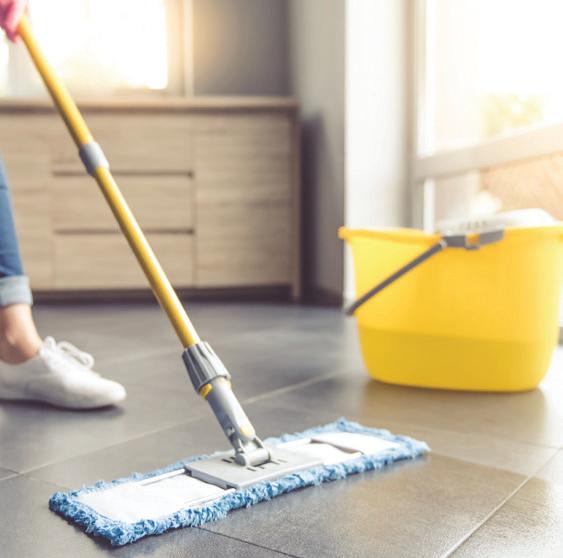

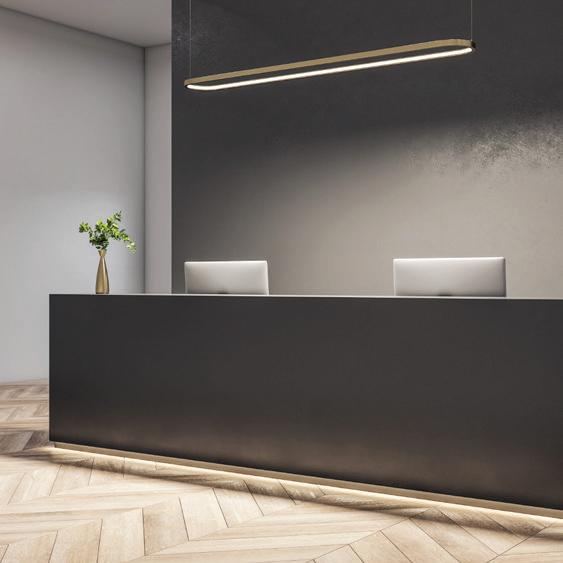

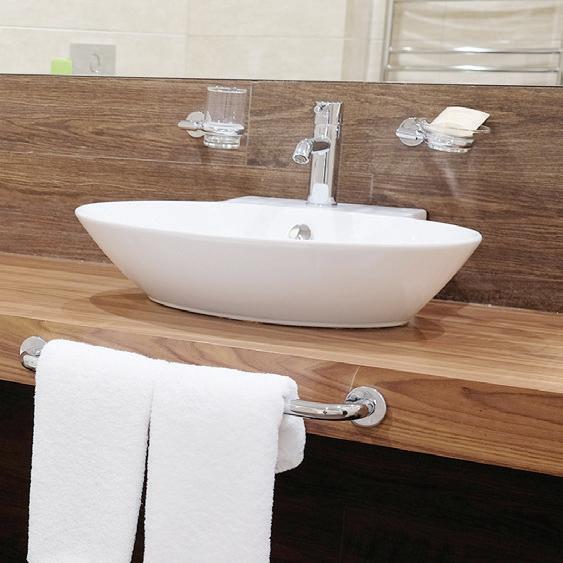




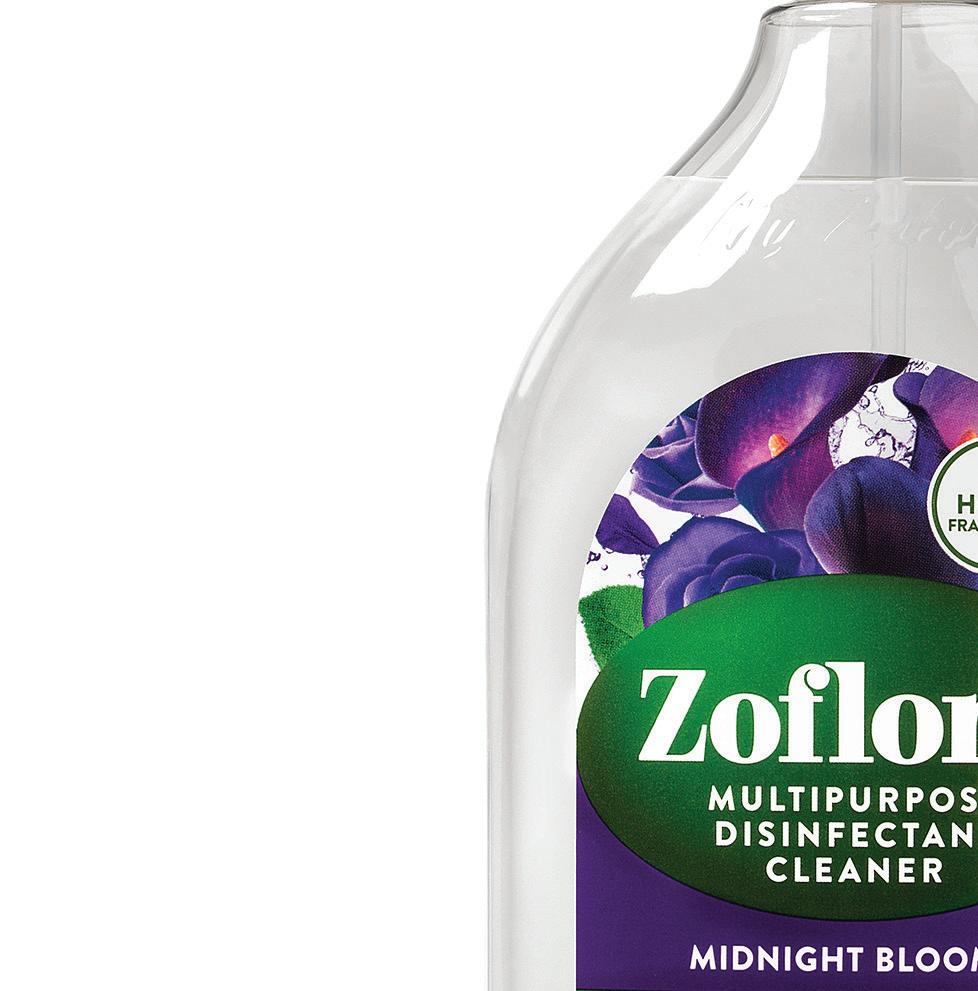







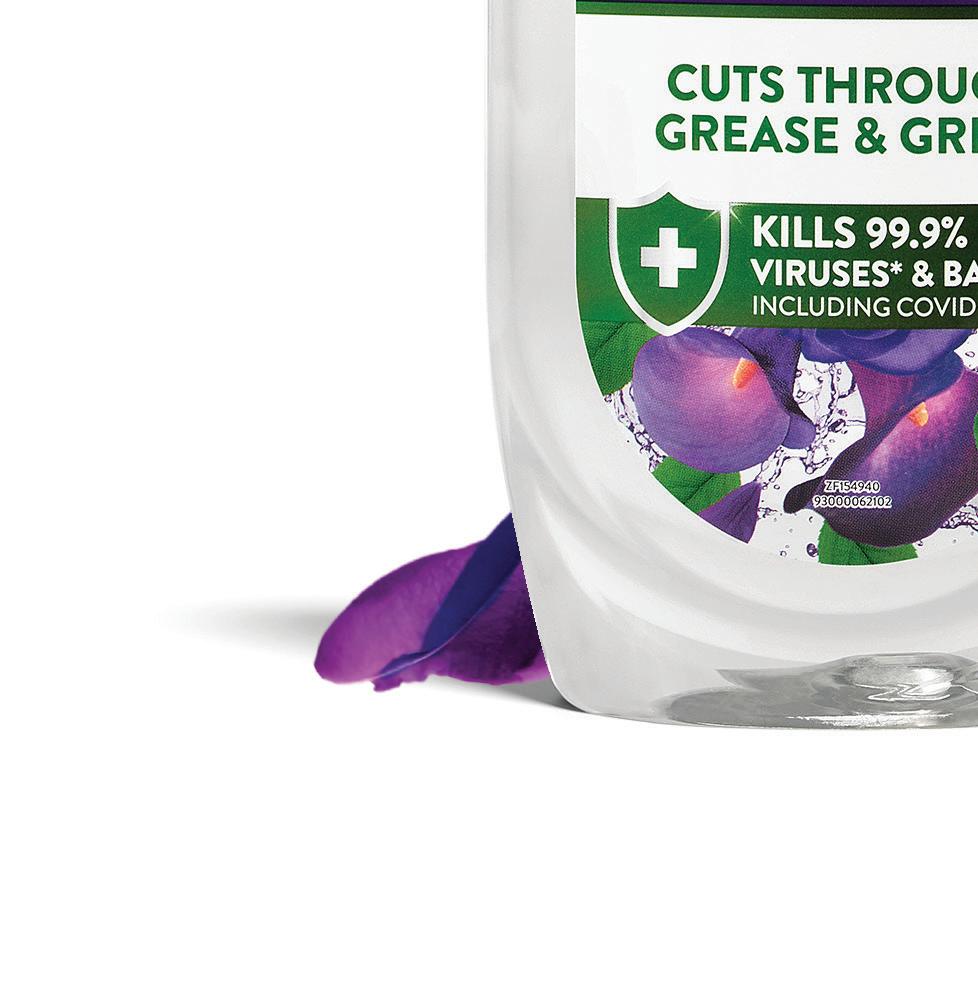



FLOORS




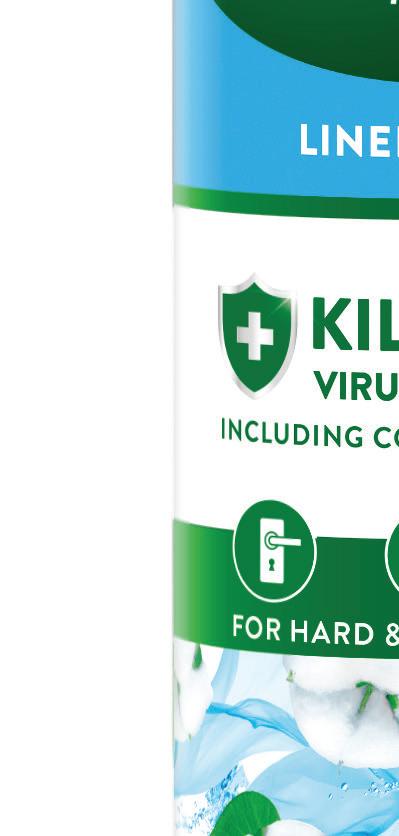



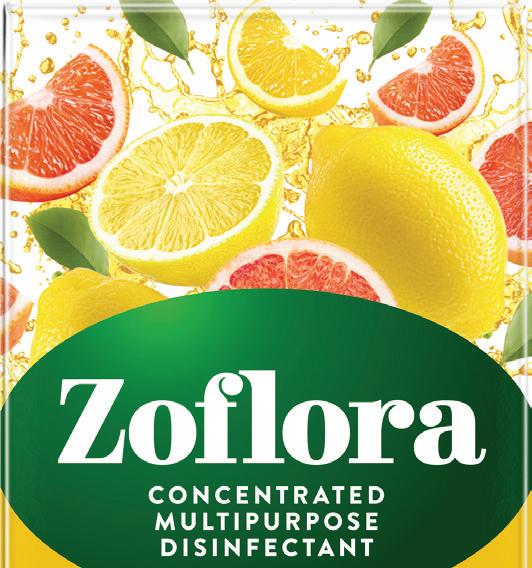


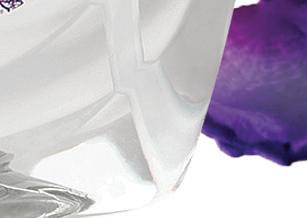






Fill your workplace with beautiful fragrance from the ground up! Add 1 capful of concentrated Zofl ora for every 400ml of water in a bucket and mop over hard fl oors.
SINKS/SHOWERS







Spray and wipe down sinks, taps and shower heads regularly. To eliminate odours, pour a capful of Zofl ora Concentrated Multipurpose Disinfectant down the plug hole after use.



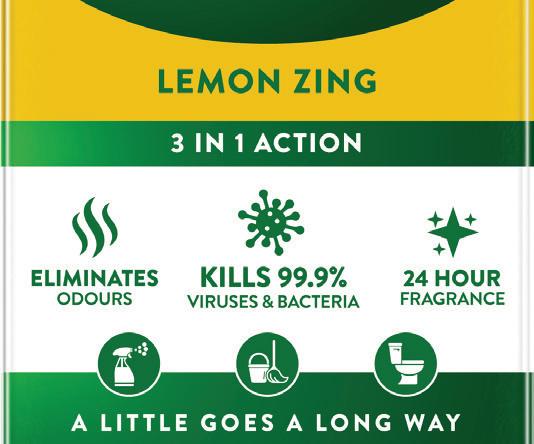

























RECEPTION / SURFACES


Use our Multipurpose Disinfectant Cleaner all around to leave spaces hygienically clean and beautifully fragrant.*
TOILETS
Eliminate germs and keep your toilet fragrant. Leave your toilet brush to soak in Zofl ora Concentrated Multipurpose Disinfectant to keep it clean and fragrant.
























DOORS, HANDLES & BUTTONS
Frequently touched areas can often harbour germs. Deliver a beautiful welcoming fragrance, with our Disinfectant Mist. Regularly spray surfaces to kill 99.9% of viruses and bacteria, including the COVID-19 virus (SARS-CoV-2).
CHAIRS / CURTAINS
Freshen up your soft furnishings with our Disinfectant Mist. Not only will your surface be hygienically clean, but your area will be filled with beautiful fragrance too.* It’s also touch dry in 45 seconds!


NEW
Standard BS EN 14476 2013+A2:2019.
*Zoflora conforms to the latest British
Chief Editor
Jade Evans jade.evans@cimltd.co.uk
Editorial Assistant
Ailsa Newgreen ailsa@cimltd.co.uk
Publication Manager
James Davies
jamesd@cimltd.co.uk
Tel: 01795 509 112
Account Manager
Jazmine Davis
jazmine@cimltd.co.uk
Tel: 01795 509 112
Administration
Manager
Natalie Murray admin@cimltd.co.uk
Tel: 01795 509 103
Credit Facilities
Manager
Gwen Lee
creditcontrol@cimltd.co.uk
Tel: 01795 509 103
Design and Production
James Taylor
james@cimltd.co.uk
Grant Waters grant@cimltd.co.uk
Marketing Manager
Lucas Payne lucas@cimltd.co.uk
Sales Director
Tom Woollin tom@cimltd.co.uk
Chief Executive
John Denning
Editor’s Letter May 2024
As we embrace the transition into spring, there’s a palpable sense of renewal in the air. In this edition of Care Home Magazine, we’re delighted to centre our attention on two vital aspects that shape the heart of the care community: staff wellbeing and outdoor spaces.
In a care home, it goes without saying that navigating the challenges and triumphs can be difficult. With this in mind, it’s paramount that the wellbeing of caregivers is prioritised. In these pages, you’ll find insightful articles and resources aimed at nurturing the physical, emotional, and mental health of your staff. Our Essential 5 feature shares five ways to promote a work-life balance, while commentary from industry experts in the main piece looks at recognising and rewarding staff in a manner that suits your home’s ethos.

Additionally, we are thrilled to shine a spotlight on the transformative power of outdoor spaces, specifically community engagement and outdoor events. Nature has an extraordinary ability to uplift spirits, calm minds, and rejuvenate the soul. From vibrant gardens to tranquil courtyards, outdoor areas can offer a sanctuary for residents, staff, and visitors alike. In our Essential 5 within this section, we highlight five elements your outdoor space shouldn’t be without – don’t miss it!
As ever, these unique pieces are complimented by our regular features in the shape of Care Home of the Month, Activity of the Month, Dishing Up and much more!
As we continue embark on this journey of improving care together, I encourage you to share your thoughts, experiences, and ideas with us. Your feedback is invaluable in shaping the content of our magazine.
Jade Evans, Chief Editor
© 2024 TGM Publishing Limited, 1st Floor, Saphir House, 5 Jubilee Way, Faversham, Kent, ME13 8GD. No part of this magazine may be reproduced or stored in a retrieval system or transmitted in any form – electronic, mechanical or physical – without express prior permission and written consent of the publisher. Contributions are invited and when not accepted will be returned only if accompanied by a fully stamped and addressed envelope. Manuscripts should be type written. No responsibility can be taken for drawings, photographs or literary contributions during transmission or in the editor’s hands. In the absence of an agreement the copyright of all contributions, literary, photographic or artistic, belongs to TGM Publishing Limited. The publisher accepts no responsibility in respect of advertisements appearing in the magazine and the opinions expressed do not necessarily represent the views of the Publisher. The Publisher cannot accept liability for any loss arising from the late appearance or non publication of any advertisement.
carehomemagazine.co.uk 4
Table of Contents
6 Industry Update
Providing insights into the latest happenings within the care sector, we share segments of industry news.
9 Staff Wellbeing
With the help of industry experts, we look at the importance of rewarding staff and how to find a strategy that works for you.
16 Care Home of the Month
This month we journey to Larkfield View Care Home and delve into the team’s unique approach to care.
18 Murals in Care Homes
Consultant Trainer at Meaningful Care Matters, Sally Knocker, shares a debate piece on ‘Using Murals in Care Homes’.
22 Activity of the Month
We look at how reflexology can be a valuable addition to the array of therapies offered to residents and how the theory behind reflexology can stimulate the body’s natural healing processes and promote relaxation.
31 Outdoor Spaces
This piece looks at how community engagement and outdoor events are synonymous with one another, discussing the importance of involving the local community in care home outdoor events and activities.

10 22 26


24


28 carehomemagazine.co.uk 5
Industry update
Hallmark Luxury Care Homes opens new £21.6m Eastbourne home
A£21.6m, Hallmark Luxury Care Home which features a cinema, café, hair salon and it’s very own, cocktail bar has officially opened in Eastbourne, East Sussex.
Over 150 guests, including the Mayor Councillor Candy Vaughan, were invited to experience Hallmark Willingdon Park Manor, a new, 85 bed, residential, dementia and nursing home on Kings Drive.
Local businesses and care professionals alike were encouraged to tickle their taste buds, enjoy demonstrations from some of the home’s 90 new team members and view their facilities which include nine luxurious suites, which form part of a unique retirement living offering called The Residences.
Features at the home include; a
sensory room to support residents living with dementia, an activities room with a baby grand piano, and a winter and summer terrace which will be used for gardening, bird watching and socialising.
The afternoon event was concluded by speeches and musical entertainment from a harpist, and the Download choir.
General Manager at Hallmark Willingdon Park Manor, Ian Cole said, “Much thought and consideration has gone into Willingdon Park Manor to help residents live active, independent and fulfilled lives, we have lots of spaces residents and their loved ones can enjoy quality time together and make new memories.”
Managing Director at Hallmark Luxury Care Homes, Aneurin
Chorley Retirement Village introduces emotional support chickens
Aretirement village in Lancashire has welcomed a flock of chickens to its home as part of its innovative, person-centred approach to care.
The exciting initiative aims to enrich the lives of residents at Buckshaw Retirement Village in Chorley by bringing a touch of nature and nostalgia into their daily routines.
The chickens have been donated by a local primary school teacher, Mrs Claire Harrison, who was involved in a recent chicken hatching programme at her school, St. Paul’s C of E Primary School in Walkden.
The coop has been donated by team manager Jo Bamford. The arrival of the chickens is highly anticipated especially for those residents who have a background in farming.
The emotional support chickens are set to bring numerous benefits to residents from fostering a sense of community to helping to reduce stress and anxiety by providing therapeutic interaction with nature. The chickens will also provide companionship and stimulate mental engagement and physical activity, contributing to overall wellbeing.
Hayley Rowson de Vares, the manager at Buckshaw Retirement Village, said: “Claire’s generosity has created a wonderful opportunity for our village.
“The chickens will be placed centrally in our garden, becoming a vibrant hub of activity once the chicks are mature enough and the weather is suitable for their outdoor living.
“This project is not just about adding life to our garden but also about reconnecting our residents
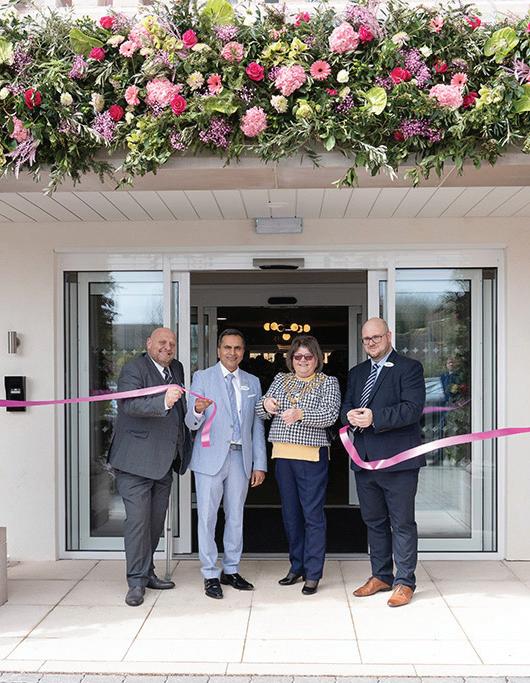
Brown added: “My role now is to provide unwavering support to our teams as they manage the home and deliver exceptional care to residents. I have full confidence in their abilities and we are looking forward to build on our reputation of providing 26 years of industryleading care.”
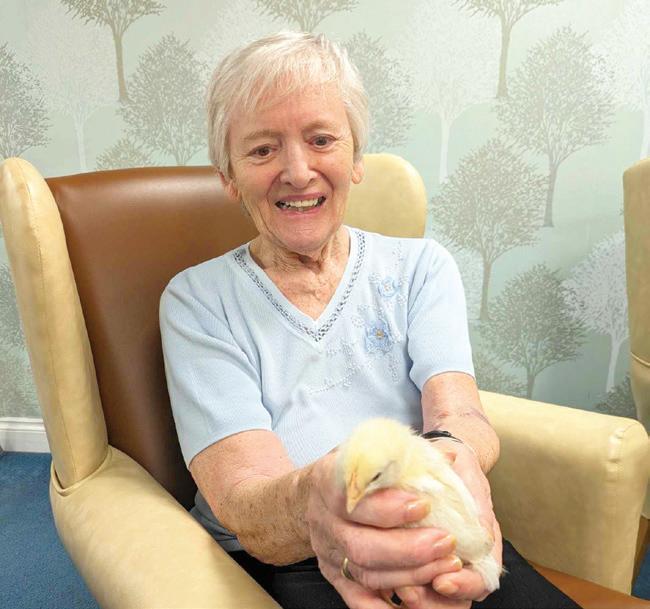
with their heritage and providing them with emotional support through the joy and serenity that comes with caring for animals.
“One of our care workers is leading a lovely chicken naming project and organising a coop opening party, inviting everyone, residents, their relatives and staff, to embrace the theme by dressing as ‘funky chickens’.
“This event promises to be a memorable celebration, marking the beginning of a new chapter in our community’s life.”
For more information, visit: buckshawretirementvillage.com
carehomemagazine.co.uk 6
Industry update
‘Very Good’ Rating For Lanarkshire Care Home
Abercorn House Care Home in Hamilton has reason to celebrate following a glowing report by the Scottish Care Inspectorate.
The care home, which is run by not-for-profit provider, Sanctuary Care, was graded as ‘very good’ across five quality indicators. These include residents’ wellbeing, leadership, staff performance, the care home setting, and care and support planning.
In the February 2024 inspection, the Scottish Care Inspectorate highlighted the home’s “positive culture” and “warm and compassionate” relationships between the residents and staff.
The inspectors paid tribute to the “skilled team” at the Lanarkshire care home, which has provided nursing, dementia, palliative, and respite care to the local community for over 15 years.
Amongst the standout features observed in the inspection was
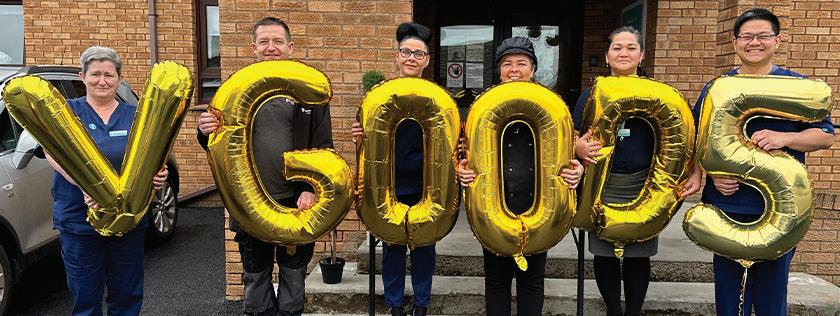
the care home’s “meaningful” activities programme, which caters to residents’ individual interests and is designed to “enhance their wellbeing and support good mental health.”
The anonymous report also recognised how hard the activities team work to develop “community links and support residents to keep in touch with their local area” – whether its arranging days out to the nearby adventure park or visiting the dementia gardens in the grounds of Hamilton Academical Football Club.
The quality of care delivered at the not-for-profit care home was praised by the Scottish Care Inspectorate in the glowing review, with particular note given to the “personal plans” which detail individuals’ care and support needs.
The “very good” rating is testament to the Sanctuary Care home’s commitment to enriching the lives of its residents, families, and staff. Many of the team have worked at Abercorn House Care Home for years, including care home manager Rowena Alferos.
Halstead Care Home Resident Celebrates Her Birthday With Local Scooter Club
AHalstead care home resident celebrated her 90th birthday in style with the help of a local scooter club.
When the team at Care UK’s Colne View, on Dame Mary Walk, learned that 90-year-old Eileen Patten loved scooters when she was younger, they quickly got to work planning a surprise scooter drive-by for her birthday.
Keen to impress on Eileen’s big day, the team at Colne View worked with local scooter club, FaNs Network, to arrange the special visit. Ten different coloured scooters arrived at the home for the special drive-by event.
Proving that life really is a hoot on a scoot, Eileen wasted no time in jumping aboard one of the scooters
as soon as they’d completed their laps and enjoyed hearing all about their stories of restoration and how the new scooters are operated today.
Eileen first used a scooter when she was a midwife and a nurse, after realising during her training that getting between appointments was much quicker via scooter than car or bus. In her younger years, she owned several bikes, but her Lambretta was her favourite. She often took friends on the back of her bike, but her husband was never keen.
With a slice of birthday cake and plenty of special gifts on the day, the team threw Eileen a party at Colne View where she was joined by her family, friends and the local bikers.

The visit was part of the home’s Wishing Tree initiative, which encourages residents to put wishes forward, allowing them to reconnect with a past hobby or try something completely new – from flying a plane to enjoying a fish and chip supper, no wish is too big or small.
carehomemagazine.co.uk 7

Caring for your communications
Is your care home ready for the biggest change to communications in a generation?
In 2025, the way we connect to the internet and use voice services will change forever. Traditional analogue and broadband lines will be retired and replaced with reliable, hosted voice powered by full-fibre connectivity. If you’ve not yet made the switch, now is the time to do so.
Switch on to full-fibre and feel the benefits today.
T: 01223 661636
E: enquiries@cambridgetelecom.com
W: cambridgetelecom.com/care-homes
Cost savings and scalability Enhanced resilience Agile communications Enhanced care Improved engagement
BENEFITS TO YOUR CARE HOME
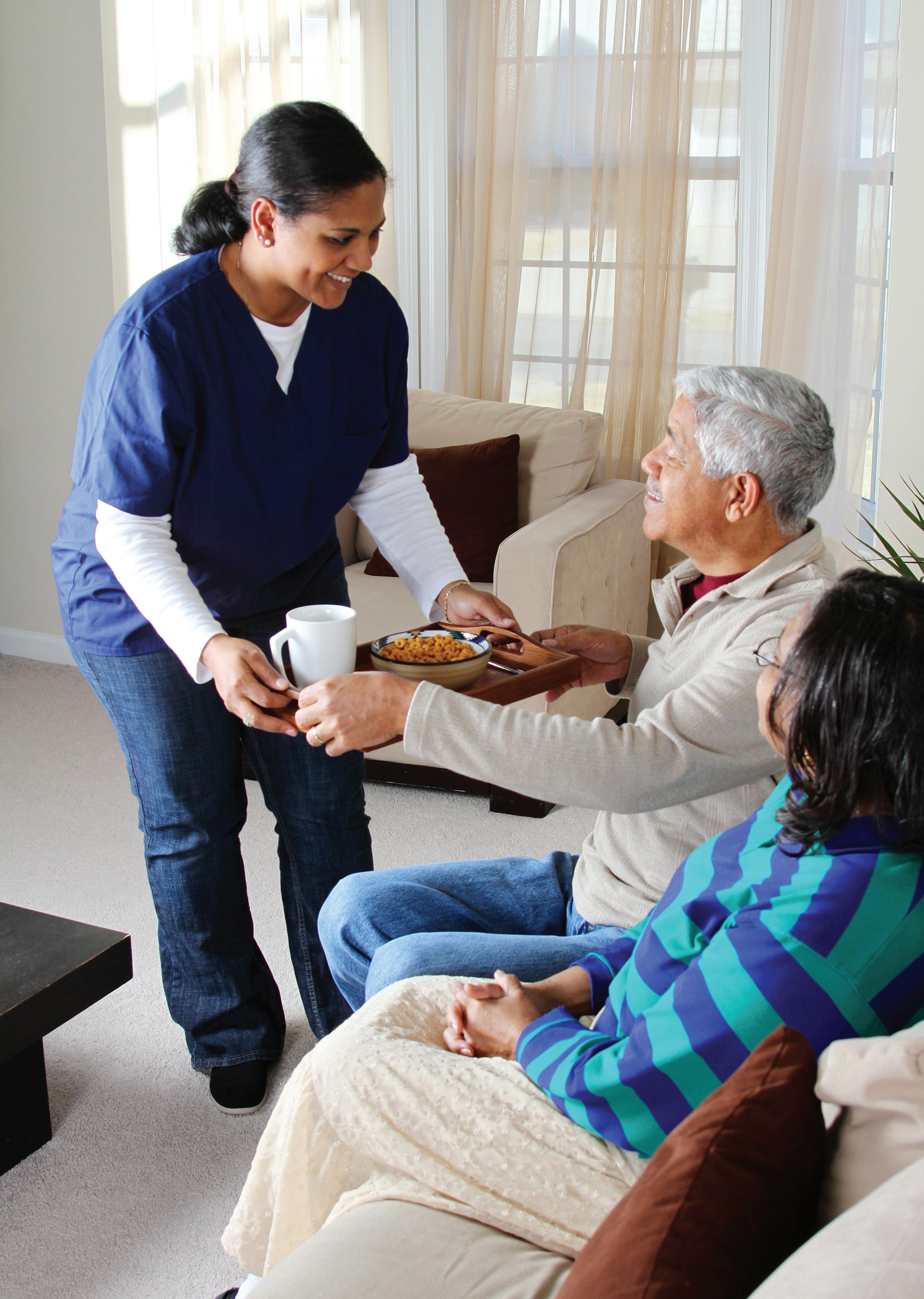
Wellbeing
Staff
carehomemagazine.co.uk 9

Essential 5
Promoting a healthy work-life balance among staff at your care home is crucial for their wellbeing and the quality of care they provide to residents. Here, we outline five effective ways to achieve this.
Flexible Scheduling
Offering flexible work schedules tailored to the needs of care home staff is crucial for fostering a supportive and efficient work environment. Recognising the diverse responsibilities and commitments of care home workers, such as family caregiving or pursuing further education, flexible scheduling allows them to balance their personal and professional lives effectively. This approach not only enhances employee satisfaction and morale but also contributes to better retention rates and overall productivity within the care home setting. By accommodating individual preferences and obligations, whether through adjusted shift lengths, remote work options, or flexible start and end times, care homes can demonstrate a commitment to their staff’s wellbeing while ensuring consistent and high-quality care for residents.
Encourage Time Off
Encourage and support staff to take regular breaks and use their holiday allowance to help foster rejuvenation, reducing burnout and enhancing overall wellbeing, which in turn promotes higher quality care for residents. Ensure you provide adequate staffing coverage to ensure that employees feel comfortable taking time off without worrying about workload or staffing shortages. Managers should lead by example and take time off themselves to set a positive precedent.
Wellness Programs
Implementing wellness programmes for care home staff that focus on physical, mental and emotional wellbeing can significantly enhance their job satisfaction, thereby improving the quality of care provided to residents. These programs typically include initiatives such as stress management workshops, physical activity sessions, nutrition education, and access to mental health resources. By prioritising staff wellness, care homes can reduce burnout, boost morale, and increase retention rates among employees. Engaging in regular exercise and adopting healthy lifestyle habits not only improves physical health but also enhances mental resilience, enabling staff to better cope with the demands of their roles. Moreover, fostering a supportive work environment through wellness programs cultivates a sense of community and camaraderie among staff members, leading to better teamwork and ultimately, improved resident outcomes.
Clear Communication
Maintain open and transparent communication channels between management and staff. Encourage feedback from employees regarding their workloads, schedules, and any challenges they face in maintaining work-life balance in order to make a conscious effort to minimise burn-outs. Work to address concerns promptly and seek solutions collaboratively to create a supportive work environment.
5 4 3 2 1
Professional Development and Support
Provide opportunities for professional development and advancement within the care home. Offer training programs, workshops, or tuition reimbursement for further education. Recognise and reward staff achievements to boost morale and motivation. Additionally, ensure that staff have access to support resources such as employee assistance programs for personal or work-related issues.
STAFF WELLBEING
carehomemagazine.co.uk 10

Driving Success
With staff wellbeing of the utmost priority in care homes across the world, we explore the benefits of recognising and rewarding staff members in a way that works best for you.

In the demanding environment of a care home, where compassion and dedication are paramount, the recognition and appreciation of staff play a crucial role in maintaining quality care and staff morale. Recognising and rewarding the hard work of caregivers and other staff members not only boosts morale, but also contributes to a positive work culture and enhances the overall quality of care provided. In this article, we delve into the significance of recognising and rewarding staff in a care home
setting and explore the benefits it can bring.
It goes without saying that working in a care home can be emotionally and physically taxing. Recognising and rewarding staff for their efforts, whether through verbal appreciation, incentives or rewards, serves as a morale booster. It validates their hard work and dedication, motivating them to continue providing high-quality care.
Post-pandemic, there is still a struggle surrounding staffing in the care sector, with employee
turnover being a significant challenge. By recognising and rewarding staff, you can enhance employee satisfaction and loyalty, reducing turnover rates. Moreover, a positive workplace reputation for recognising and rewarding staff can attract talented individuals, aiding in recruitment efforts moving forwards.
Naturally, when staff feel valued and appreciated, they are more likely to be engaged and committed to their roles.
Recognising and rewarding staff for exceptional performance
STAFF WELLBEING
carehomemagazine.co.uk 12
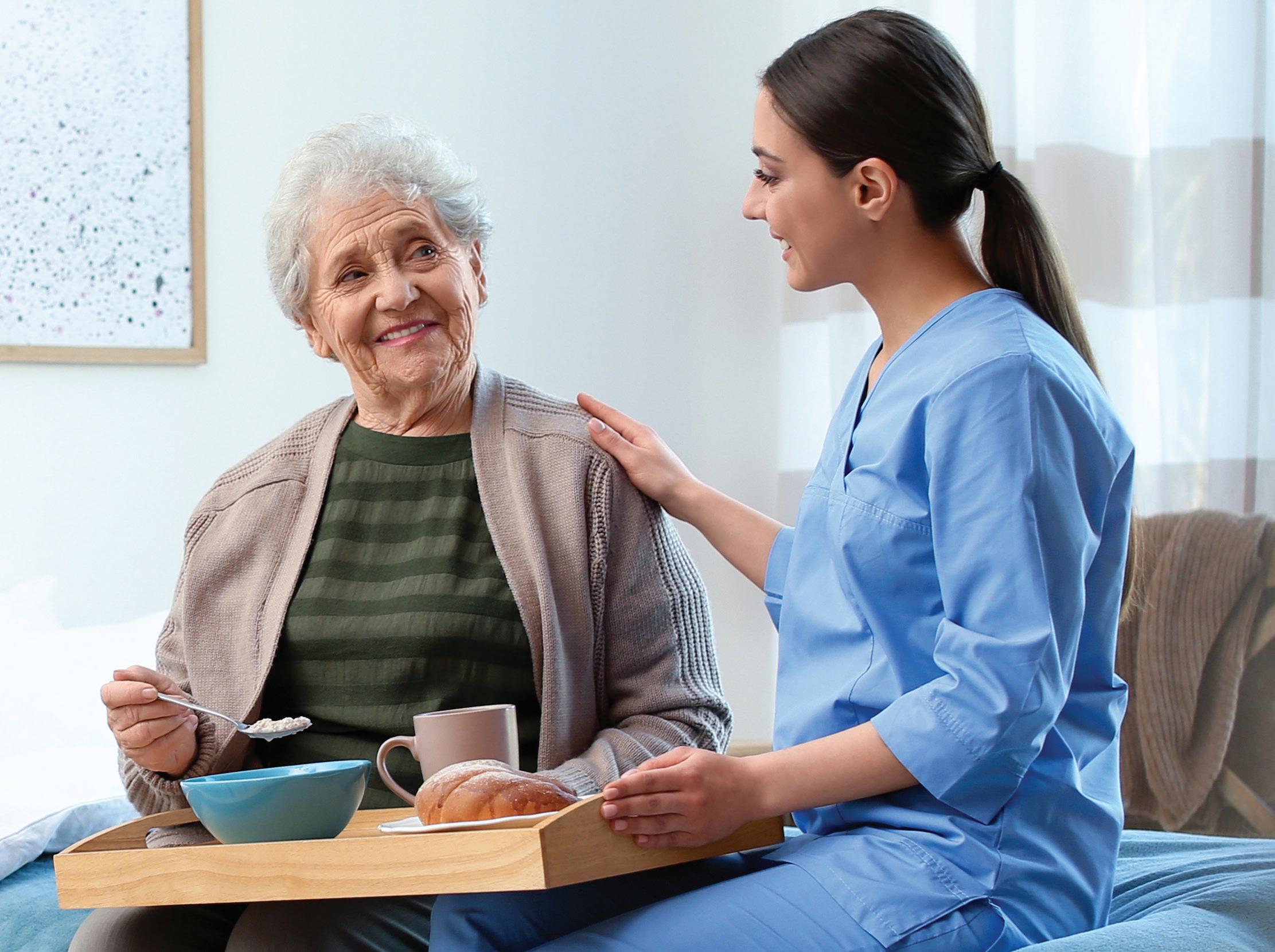
encourages them to strive for excellence and continuously improve their skills, ultimately leading to enhanced performance and better outcomes for residents.
A culture of recognition and appreciation fosters a positive work environment where staff feel respected, supported and valued. This, in turn, promotes teamwork, collaboration and mutual respect among staff members, creating a cohesive and harmonious workplace.
Happy and motivated staff are then more likely to provide compassionate, personalised care to residents, in turn boosting a home’s reputation and, more than likely, its occupancy levels. When staff feel recognised and rewarded for their efforts, they are more likely to go above and beyond to meet the needs of residents, leading to higher levels of resident satisfaction and wellbeing.
In terms of strategies for recognising and rewarding
The process is
just as important as the strategies that come out of it.
staff, look to organise regular appreciation events such as staff luncheons, awards ceremonies, or team-building activities to publicly recognise and celebrate staff achievements and milestones. Rather than rewarding groups, take the time to acknowledge staff contributions on an individual basis through personalised notes, thank you cards or one-on-one meetings with management.
Aryanisha Lawes, Coach and Consultant on leadership, confidence and wellbeing for friendly growing teams, believes that the best strategies for recognising outstanding
performance are always created in collaboration with existing staff. “This ensures they are meaningful for all team members, who may vary greatly in personality, background and interest. The process is just as important as the strategies that come out of it. It’s a great opportunity to get to know staff better and build trust at all levels - don’t waste it! Remember: not everyone is confident or comfortable to give ideas in open team meetings. Even if you’re a nice person, you still operate in a power dynamic that may make less senior staff nervous or shy around you,” said Aryanisha.
Implementing incentive programs that reward staff for outstanding performance, such as bonuses, gift cards, extra paid time off, or other tangible rewards, will also go a long way amongst your team.
Invest in staff development by also providing opportunities for training, education and career advancement. Recognise and
STAFF WELLBEING carehomemagazine.co.uk 13
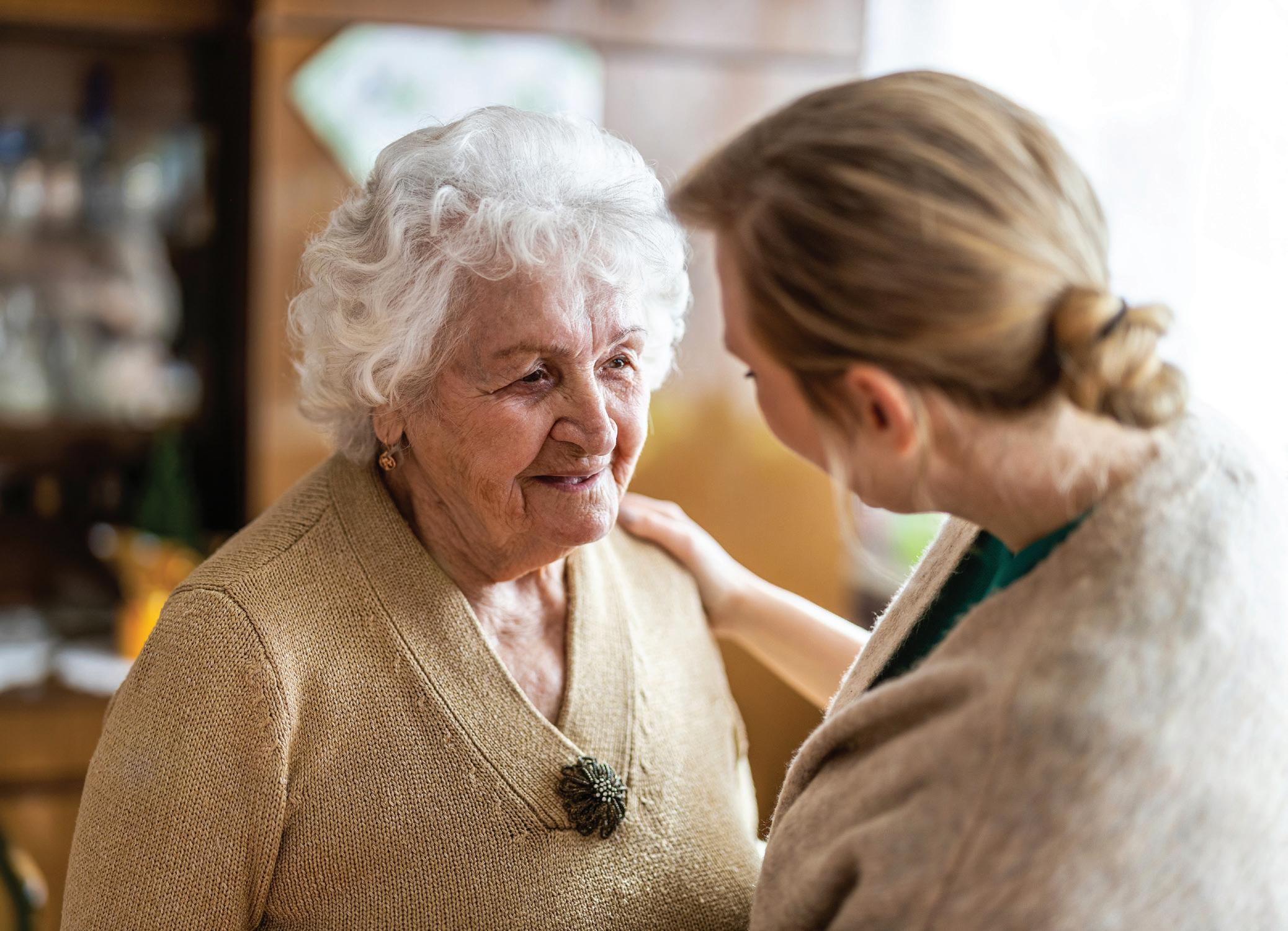
reward staff who demonstrate a commitment to personal and professional growth.
Another beneficial approach is peer-to-peer recognition, so encourage this where possible by implementing programs where staff can nominate their colleagues for recognition, based on exemplary behaviour, teamwork or acts of kindness.
Aryanisha explained that it’s important to provide a helpful structure to staff engagement by clarifying any parameterssuch as budget and timeframe. She recommends asking open questions including ‘What do you think outstanding performance looks like in your role?’, ‘How can we help you achieve this more easily?’, ‘How would you like to be rewarded?’. “Offer multiple methods for engagement and feedback, so that everyone contributes honestly.
Use an experienced facilitator if you lack the skills and time to follow a clear and robust ‘Assess, Vision, Plan, Act’ cycle to turn vague ideas
into sustained practice,” added Aryanisha.
You also need to ensure this process is communicated sensitively, alongside efforts to address any major challenges or causes of stress within the team.
Aryanisha explained that, otherwise, you could unintentionally come across as out-of-touch, avoidant or sugar-coating – “which would alienate staff. They might rather you prioritise making their daily work easier and safer, over developing new performance rewards. If in doubt, ask, don’t assume. Don’t let ‘fun’ activities like this distract you from any uncomfortable conversations or changes you’re avoiding.”
Aryanisha Lawes can support staff wellbeing through online and in-person training and coaching that fits your needs and budget. This support ranges from one-off workshops; a 30-day email series and eight-week courses via Zoom to ongoing coaching for leaders and their teams to address the root
causes of stress. To help you decide if working together is a good fit, you can book a discovery call to discuss your values, mission and current challenges.
Aryanisha has experienced burnout from supporting people in vulnerable circumstances herself, so she is passionate about practical and sustainable solutions. Her 12-month programme, Super Humans, helps leaders in friendly growing teams to deeply embed change, bringing all staff along the journey to promote a caring, courageous and safe culture.
Recognising and rewarding staff in a care home setting is not just a gesture of appreciation, it is an essential investment in the wellbeing of staff and residents. By fostering a culture of recognition and appreciation, care homes can create a positive work environment, enhance staff morale and performance and, ultimately, improve the quality of care provided to residents.
STAFF WELLBEING carehomemagazine.co.uk 14

Care Home of the Month Larkfield View, Inverclyde

Larkfield View is a purpose-built 90 bed care home that prides itself on providing quality, person-centred care for those requiring nursing care, dementia care and palliative care. The home is equipped with modern amenities and the bedrooms are bright and spacious with ensuite shower facilities. The home has been designed with the aim of creating an enabling and engaging environment.
Part of the family-run Holmes Care Group, Larkfield similarly embraces the benefits of family and making connections with others in its relationship-focused approach, ensuring residents and their families are at the heart of everything they do. Larkfield recognises that everyone is unique and encourages residents to personalise their bedrooms with personal belongings and small items of furniture, believing that it’s the individualism and celebration
of people themselves that make Larkfield a truly special place to live. By creating a warm and welcoming environment, residents feel able to recognise and develop their own individual strengths and abilities. The promotion and support of independence supports their wellbeing, comfort and safety, whilst empowering them to live an enriched and fulfilled life.
The recognition and appreciation of the people at Larkfield is clearly the cornerstone of the home’s success; the dedicated team have received numerous awards, including a prestigious national award for their exceptional end of life care provision. The team received the Palliative and End of Life Care Practice honour at the Care Home Awards, run by Scottish Care. The Scottish honour followed on from Larkfield getting through to the final three in the Northeast England and Scotland heat of the Great British Care Awards. The home values and
appreciate its staff, providing them with professional and personal development training to ensure the care they provide is consistently of the highest quality, coordinated and forward-thinking. The 24hour team of qualified nurses and carers has a wealth of experience in understanding the individual needs of each resident, delivering personalised, coordinated care, thereby enabling residents to live with purpose.
With noted excellence in endof-life care, Larkfield created its own bereavement charter, with a designated person acting as the main point of contact for staff who want to speak about their own experience. The introduction of ‘circle’ meetings after the loss of a resident also gives staff time to reflect. The home also holds a very emotional ‘tree of honour’ ceremony, where family members of people who have passed can visit and pay their respects.
A particularly unique aspect, and
BUSINESS carehomemagazine.co.uk 16
something that truly sets Larkfield apart from standard care homes, is its initiative of taking residents on an annual holiday. This unusual, highly anticipated and popular scheme involves taking residents to a caravan park, where they can stay for two or three nights as appropriate to the needs, wishes and requirements of the individual, with a focus on togetherness and fun. With a wealth of inclusive activities and fun-filled interactions, these yearly holidays are a highlight for residents and staff alike, and clear testament to Larkfield’s philosophy of making every moment count.
Another highly popular established event is the Annual Away Day to Largs, a traditional seaside resort on the Firth of Clyde, complete with a Victorian promenade and a choice of ice cream parlours and souvenir shops.
Last year 74 out of 90 Larkfield residents joined this much-loved daytrip. Friends and relatives are very much encouraged to join in the fun, with the highlight being fish and chips and a huge party, complete with entertainment. One notable feature of this activity is that it is organised with no cost to residents and their families, and is funded by money raised by staff through fundraising events.
Larkfield’s proactive and positive connection with the local community is exemplified by the Fashion Show for residents and
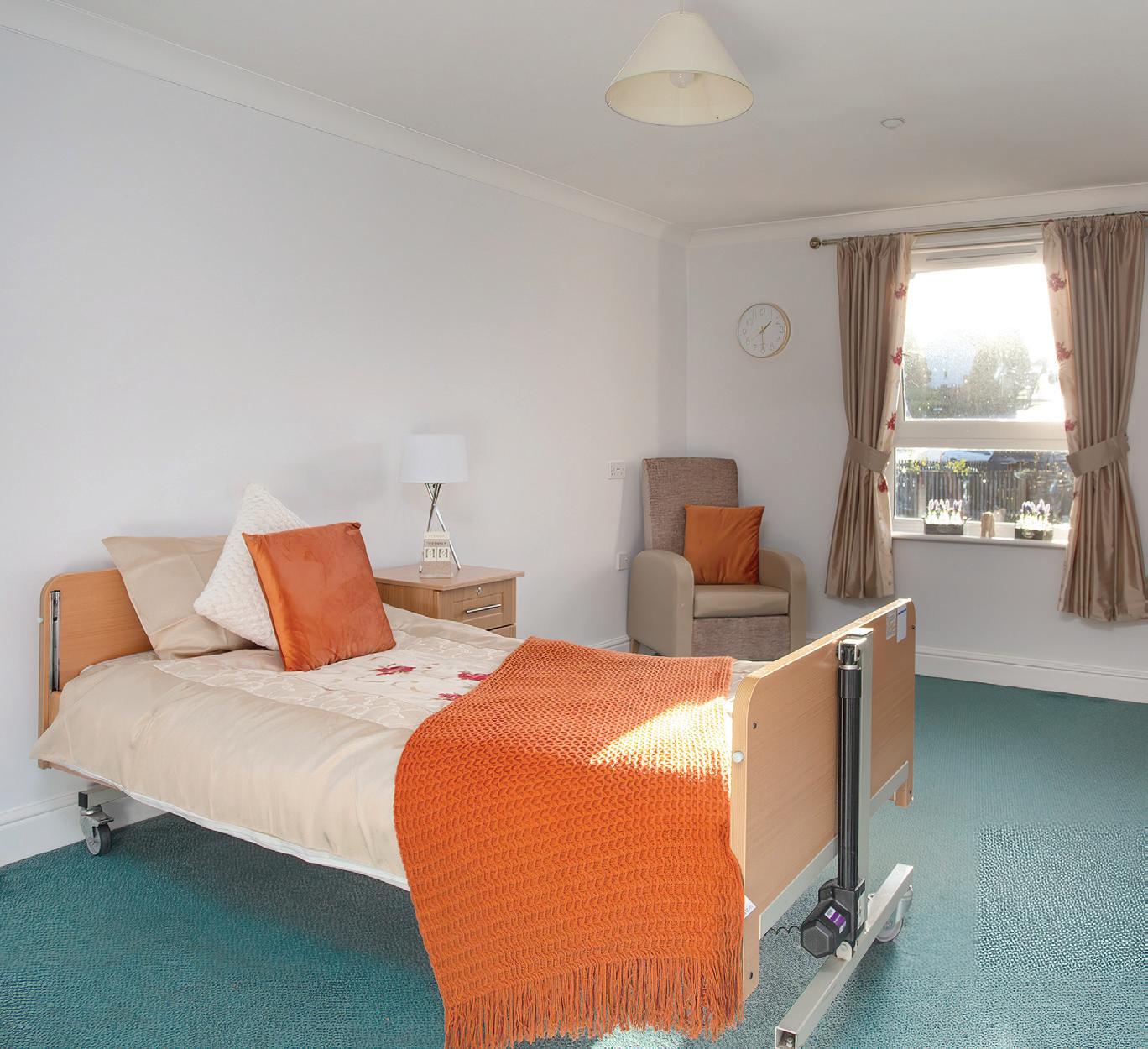
children of staff that took place earlier this year at Tenants Hall. Residents strutted their stuff up and down the catwalk, much to the clear enjoyment of their friends, family and members of the local community who were there to support them. This glamorous and popular event is another fantastic example of how Larkfield actively fosters and maintains relationships with the wider community. Having access to a dedicated minibus gives residents the opportunity to regularly travel further afield and

experience life beyond the physical walls of the home itself.
Larkfield Manager, Elsie MacLennan, revealed the home’s ‘most successful PR’ stems from recommendations from relatives of current residents, notably often during show round visits for prospective families looking round the home. Elsie acknowledges that this first-hand, authentic endorsement of the care provided is the biggest compliment there is.
holmes-care.co.uk
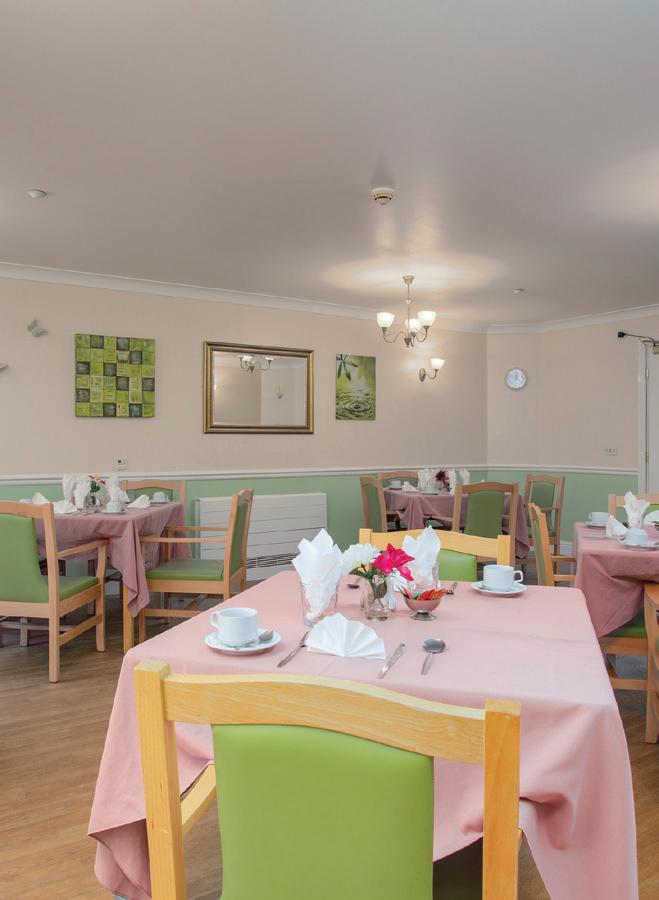
BUSINESS carehomemagazine.co.uk 17
Using Murals in Care Homes
An incredible piece from Sally Knocker, Consultant Trainer at Meaningful Care Matters, debates what is positive and problematic in relation to the increasing use of murals in care homes.
Many years ago, I worked in a care home in Kensington and Chelsea in London, England. I remember that the houses for people living with dementia were named after famous streets and squares in the area. The ideas seemed to make sense in terms of familiarity. However, one woman living with dementia saw the large fake ‘Sloane Square’ street sign near the door of the home area, and looked both perplexed and annoyed, saying, “If this is Sloane Square, then I will eat my hat!”
A more recent story was where a lively mural of a village street scene, including horse and cart and a variety of probably Victorian era images, was installed in a Butterfly Home. I had liked it because there were children playing and a few dogs in the picture, and I thought it would cheer up a very long and quite bland looking hallway. When going to check it out, a man living in the home smiled wryly at me and said, “Do they really think we are that old?!”
People living with dementia aren’t stupid! This may seem like such an obvious statement, but it is important when considering the choice of murals that we don’t patronise or confuse people.
Many people have quite strong views on this topic, but I am comfortably ‘on the fence’ in the sense that I have seen some wonderful large murals in Butterfly care homes which have brought lots of happiness and conversation. With that being said, I have also
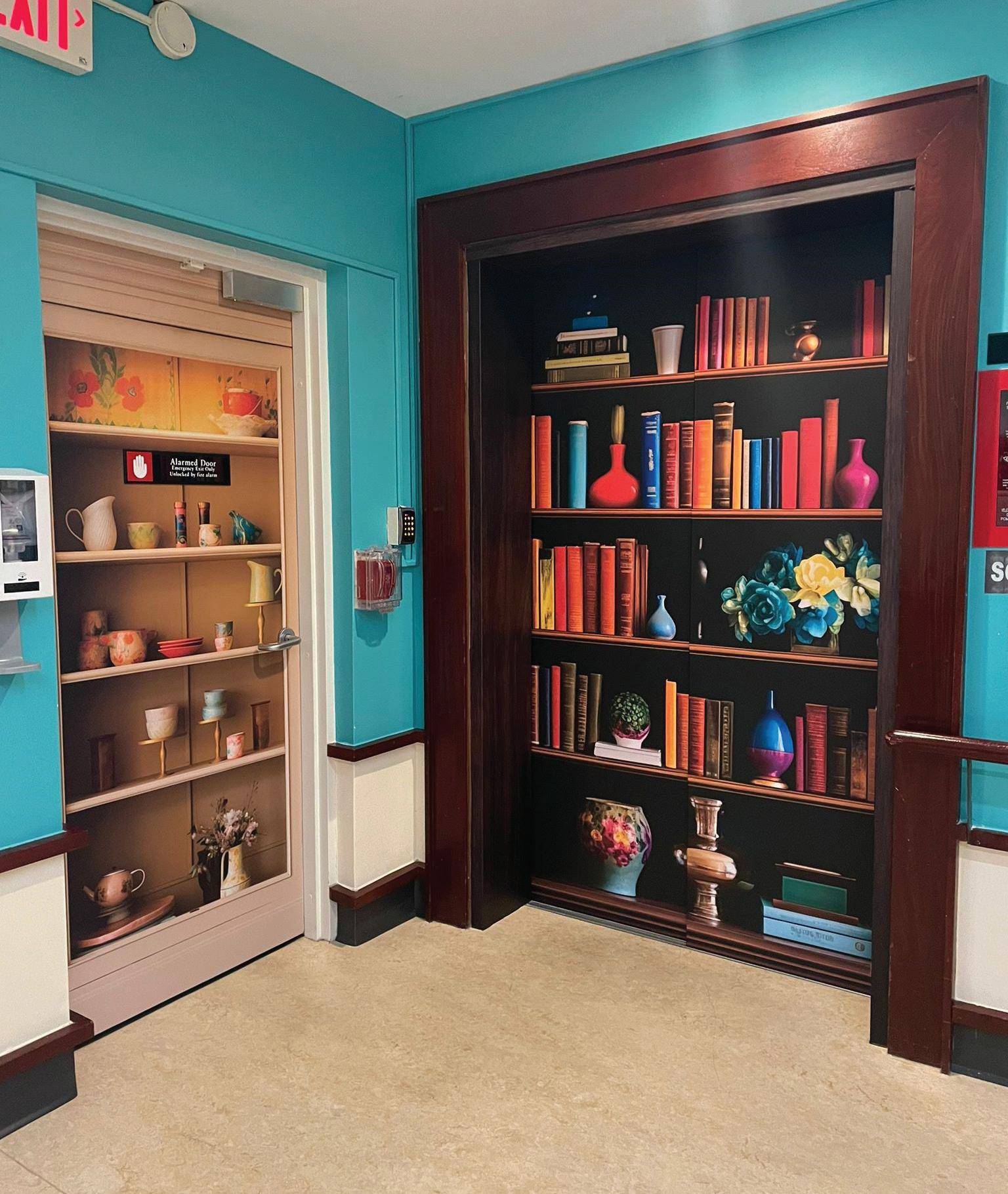
seen some ill-thought-out artwork which has done the opposite, and just doesn’t make sense or add any joy to people.
Location, Location, Location
In an interesting feature by Sue Learner in 2018 (Carehomesuk), there were some important critiques of the trend for large
murals. Anna Park, Care Consultant, shared, “I understand the idea of bringing reminiscence therapy to life with colourful, nostalgic murals, but I think the scale, design and permanence of them aren’t always dementia-friendly, with many commercial companies jumping on the bandwagon without an understanding of the main principles of good dementia
RESIDENT WELLBEING
carehomemagazine.co.uk 18

design.” A quick internet search reveals lots of companies who are providing what are described as ‘dementia friendly’ murals. One of the murals shared in the 2018 article was of a huge aeroplane mural across a whole wall in the dining room of one care home. What is striking with this example is that it had no relationship with food or mealtimes. One of the important principles of design in the Butterfly Approach is to have images that relate to the function of the room and are, therefore, helpful in terms of orientation. Wendy Mitchell, the late Writer and Dementia Activist, agrees with this, commenting, “As a navigation tool to indicate the function of a room, they have some purpose, but they must be contextually relevant and not add to a sense of bewilderment.”
(Carehomesuk, 2018)
Local Themes Using Local Talent
Some of the best murals I have seen in care homes have involved local artists coming in to create
bespoke art, which involves talking to the people living and working in the home, so that what is created is relevant and relates to the interests and backgrounds of people living there. Involvement of the people whose home it is seems obvious, but is often overlooked (Winton, E., & Rodgers, P. A. 2019). In one of our Irish Butterfly homes, in St Brendan’s CNU in Co. Galway, Anita Boyle, the artist has created some beautiful murals of the lake and other landmarks in the area, as well as a café façade and smaller features, such as vases with roses, an old radio etc.
St Brendan’s have also involved a group of St Brigid’s Art & Design students with their teacher, Siobhan Treacy, to create a mural with interactive and sensory elements, including lights which go on inside a house and tactile flowers around the outside of the house.
Nature scenes are likely to promote wellbeing for most people, but it will again be important to consider what kind of nature might be relevant and interesting
to individuals living in the home –forests, mountains, lakes or beach scenes. When talking to Anita, the artist at St Brendan’s, I encouraged her to include some ‘live’ elements to her landscape, such as a dog running beside the lake, a woman pushing a pram or some children playing in a park. These can literally bring the landscape to life and are more likely to prompt a conversation, for example, “Did you used to walk your dog near the lake?” “What games did you play outside as a child?” etc.
Keeping it Real
Murals of shopfronts are popular in some of our Butterfly Homes. Whilst these don’t really convey a sense of ‘home’, they do offer a feeling of a destination or a sense of going out for those who spend long periods inside. It is important to offer some ‘real’ objects to engage with linked to these murals, for example some fresh fruit in a basket near a fruit store mural or a clothes rail with dresses, shirts, scarves etc near a fashion shop
RESIDENT WELLBEING carehomemagazine.co.uk 19
scene. This gives a more interactive and sensory element than just the ‘flat’ picture. (Sas, C., Davies, N., Clinch, S., Shaw, P., Mikusz, M., Steeds, M., & Nohrer, L. 2020)
Appetising food related murals in dining areas can cue everyone into eating and help promote an appetite. We will still need to be aware that food preferences are varied, so imagine if it was something you disliked or were allergic to greeting you on the walls of the dining room – or something that you wanted and then it wasn’t on the menu!
Truth or Lies?
What about murals or wraps on objects which are pretending to be something which, they aren’t? We encourage care homes following the Butterfly Approach to disguise their medicine or housekeeping carts with something more fun and colourful. Some have found some creative wraps or decals to do this well, including pictures of post boxes, flowers and birds. It is certainly less institutional looking, but some might argue that this involves an element of deception on a medicine trolley/cart (even if some of us will remember the Mary Poppins song that ‘A spoonful of sugar helps the medicine go down… in a most delightful way!’)
Regrettably, there seems to be little published research on this topic. However, arguably, some writers assert that we already know a lot through what has been tried and tested. (Evans, S. C., Waller, S. & Bray, J. 2022) There have been some critiques of murals, which are ‘hyperreal’ also known as ‘trompe l’oeil’, which are meant to deceive the eye. People living with dementia already often face perceptual and spatial awareness difficulties, so these could further confuse or unsettle people. (Andrews, J and Quirke, M in Carehomeuk article, 2018)
Some murals I have seen are pretend pieces of furniture, for example, a love seat on a wall, which is surely likely to lead to people falling trying to sit on it.
Decals of bookshelves or libraries
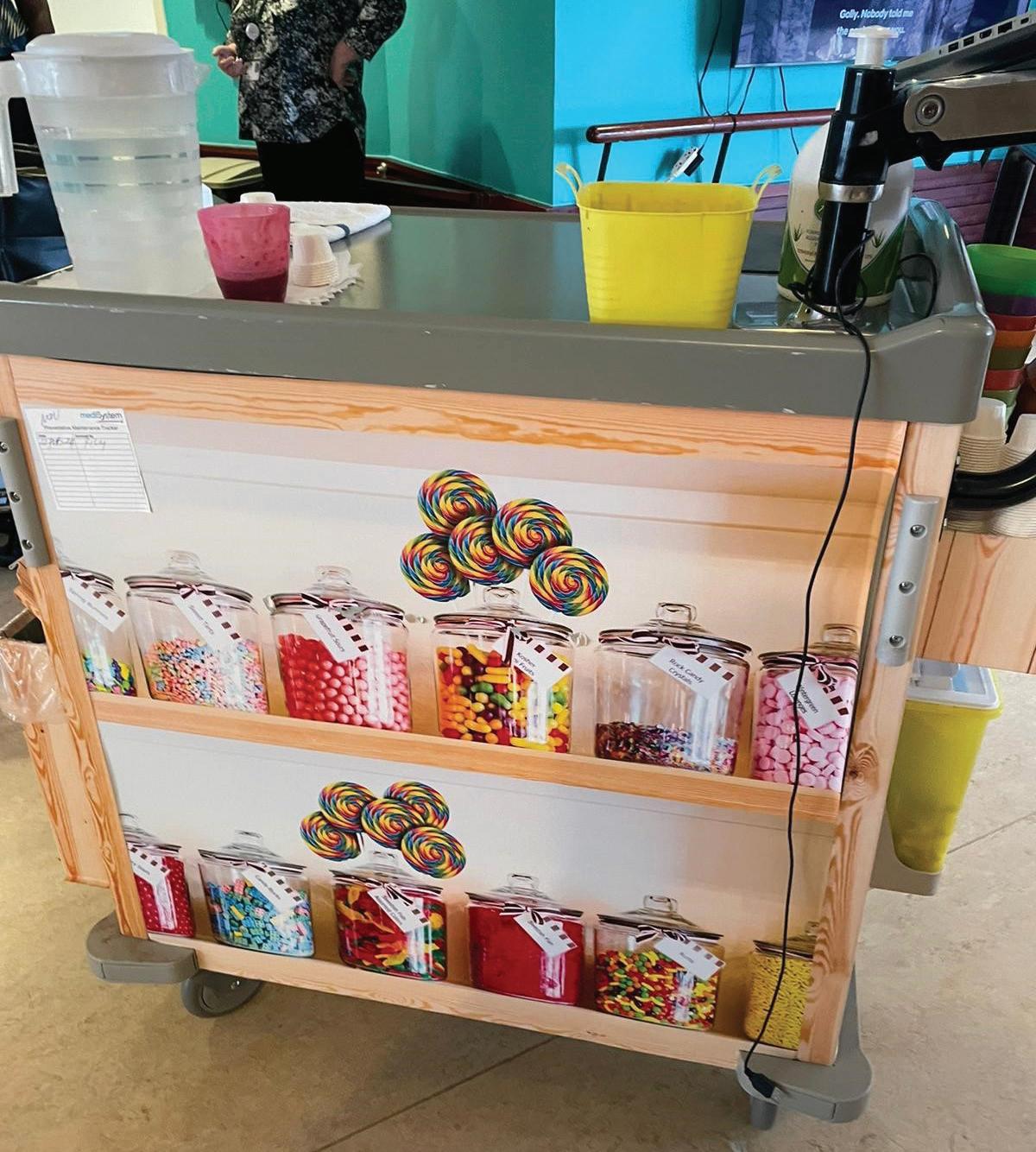
are often used to disguise an exit door, but do we consider how frustrating and confusing it might be to reach for a book and for it to be just a picture? Others would argue in their defence that the titles and authors on the book spines would themselves provoke positive memories and discussions, and they will be helpful in distracting someone from wanting to leave. However, it would make much more sense to have a library mural in a reading nook area, with a side table, lamp and actual books, chosen with some consultation as to the reading preferences of people living in the home.
There is an increasing focus in design in relation to dementia specialist elements, which might enhance our understanding of what works best for people and offers more freedom of movement, particularly in ‘secure’ environments where people understandably feel frustrated and trapped. (Anderson DC, Kota SS, Yeh L, Budson AE. 2023) The current thinking around
disguise of exits suggests merging the colours and pattern of the walls with the elevator or door, so they become hidden, rather than making them a feature or destination.
In one home I remember in Bristol, UK, there was a mural of a stable door, with a very life-like photograph of a horse looking over the door. When I looked closer, there were lots of stains of porridge near the mouth of the horse, where people had obviously been feeding him. When I asked the home manager, she said the horse was a much-loved character in the home, so arguably this ‘deception’ had generated a great deal of pleasure. This is not dissimilar to the use of dolls, which become very real babies in the reality of some people living with dementia.
A pretend window view in a bathroom with no window is another debatable feature. Will the view of the outside hills and the sunshine make the bathtime experience more pleasurable, or will it be disorientating? Most anecdotal
RESIDENT WELLBEING carehomemagazine.co.uk 20
evidence I have gathered is that they lessen the claustrophobic feel of the bathroom and enhance the experience, more than being a negative feature. A large mural of a map of the world in a bathroom can also be a wonderful conversation starter about the places people enjoy visiting or would like to visit. I personally find the predominance of seaside themes in bathrooms somewhat predictable, but I know many love them!
Context is Everything
So, what can we conclude in relation to what is positive or problematic in relation to the increasing use of murals in care homes? It seems that context is everything, and so often the very best murals have been chosen and created in consultation with people living and working in a home, as in the St Brendan’s example. Images which help people in terms of orientation to the function of the room or the direction of the hallway to help with wayfinding are surely a good addition. Ultimately, the ‘proof is in the pudding’, as you will see the reactions people have to murals and whether people stop and smile when they look at the images, and talk about the things they see with enjoyment. You might need to be prepared to admit you have made a mistake if the reactions aren’t positive, and particularly if they cause any distress, so it’s obviously better and more cost-effective to do your homework in advance if you can!
At Meaningful Care Matters, we would argue that it takes much more than changing walls to create real culture change to reduce the sense of an institution. However, it can certainly have a transformative impact on the look and feel of an environment for those living and working there, with the ultimate goal of deepening the feeling of being at home and having things which bring joy.
Please do let us know your experience and share your images and stories with us via admin@meaningfulcarematters.com


RESIDENT WELLBEING carehomemagazine.co.uk 21
Holistic Care
This May, we explore the benefits of introducing reflexology as an activity in care homes and how it can contribute to the overall wellbeing of residents.
In recent years, care homes have increasingly embraced holistic approaches to resident care, recognising the importance of addressing not just physical ailments but also emotional and mental wellbeing. One such practice gaining popularity is reflexology, an ancient healing technique that involves applying pressure to specific points on the feet, hands, and ears to promote relaxation and healing throughout the body.
Reflexology is based on the principle that various points on the feet, hands, and ears correspond to specific organs, glands, and other parts of the body. By applying pressure to these reflex points, practitioners believe they can stimulate the body’s natural healing processes, improve circulation, and promote relaxation. Reflexology is non-invasive and can be performed with the individual fully clothed, making it accessible and comfortable for people of all ages and health conditions.
There are plethora of benefits which come with introducing reflexology in care homes, the first being stress reduction. Many residents in care homes experience stress and anxiety due to changes in their environment, health concerns, or social isolation. Reflexology has been shown to promote relaxation and reduce stress levels by stimulating the release of endorphins, the body’s natural feel-good hormones.
With sleep disturbances often prevalent among seniors, reflexology can enhance sleep quality, therefore significantly impacting their overall wellbeing.
Reflexology sessions before bedtime have been shown to
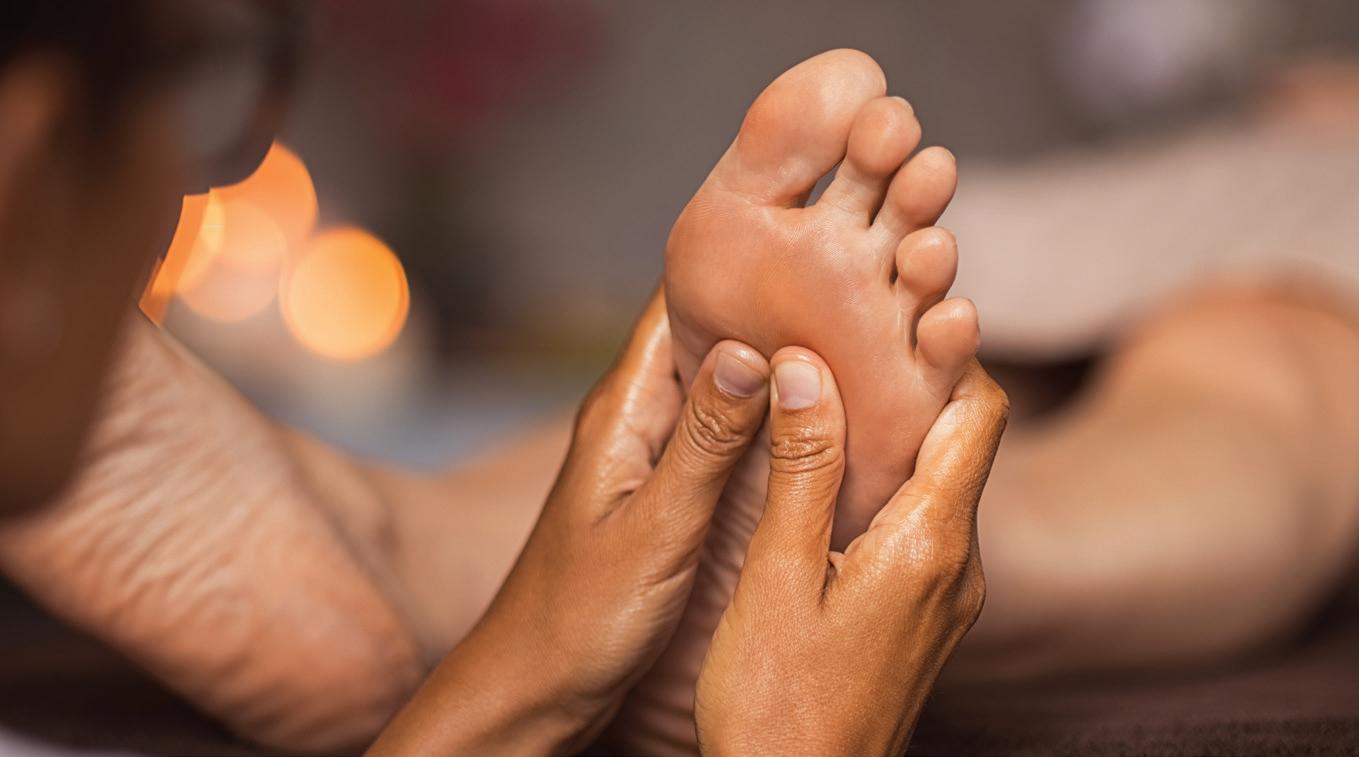
promote relaxation, reduce night-time awakenings, and improve sleep quality for residents in care homes.
The nurturing touch and focused attention provided during reflexology sessions can have profound emotional benefits for residents.
Introducing reflexology as an activity in care homes requires careful planning and consideration and to do so, you must ensure that staff members receive adequate training in reflexology techniques and safety protocols. This may involve bringing in external trainers or partnering with qualified reflexologists.
Ensure you designate a quiet and comfortable space within the care home where reflexology sessions can take place. Consider incorporating soothing elements such as soft lighting, calming music, and aromatherapy to enhance the experience – this will all contribute to a more enjoyable experience.
Be sure to educate residents and their families about the benefits of reflexology ahead of introducing it and encourage them participation in sessions. In line with
this, scheduling and accessibility is important to ensure there is no confusion among residents. Offer regular reflexology sessions as part of the care home’s activities calendar and ensure that residents have easy access to these sessions and that scheduling is flexible to accommodate individual preferences and needs.
Once reflexology is successfully integrated as an activity, make sure you gather feedback from residents, staff, and family members to assess the effectiveness of reflexology in improving resident wellbeing, as the last thing you want to be doing is wasting people’s time if it’s not having the desired benefits. Once you have this, you can then make adjustments to the program as needed based on feedback and observations.
By incorporating reflexology as an activity, your care home can provide residents with valuable opportunities for relaxation, pain relief, and emotional support. With proper implementation and ongoing evaluation, reflexology has the potential to enhance the quality of life for residents and contribute to a more holistic model of care.
ACTIVITY OF THE MONTH
carehomemagazine.co.uk 22
Better by Design: A Fee Income System especially for Residential
and Nursing Care Homes
We’ve analysed every aspect of fee income processing to the nth degree and developed a bespoke solution that delivers simplicity and ease of use coupled with speed, flexibility and accuracy – all in one outstanding application package.
SFIncS r/3 is the ultimate fee income management and control system.
• Unlimited sponsor and charge code assignments allow complete flexibility of service user billing profiles.
• Perfect for all types of care homes - Nursing, Residential, Mixed, Specialist.
• Unique continuous billing functionality provides the most efficient charge definition possible. Only charge start points need to be maintained and all sponsor charges for each service user (including historic) are shown on just one screen.
• Completely flexible invoicing. Invoice any sponsor at any time for any charges for any service user for any period of time.
• Super fast receipt entry including ‘Six clicks’ copy functionality.
• Balance forward accounting means you can forget laborious invoice matching.
• Ad hoc charges functionality.
• Cashbox module included.
• Works for multiple or single home operators.
• Integrates with any accounting system.
• Plus all the reports, views and graphs you’ll ever need.
• In use for over 12 years.
• Free training and help with system set up.
• Historic data loading option available (charges may apply).
• 30 day free trial.

For a demo, free trial or for further information please email benjones@intracare.co or visit https://intracare.co/get-started

Building Together
As experts in developing luxury, award winning, care homes throughout the South-East, providing assisted living, nursing, respite, and dementia care, the team at Signature Senior Lifestyle understand the importance of working with a reliable communications provider. In this insightful case study, we speak with Neil Phillips, Commercial Director for Signature Senior Lifestyle to find out more about the invaluable partnership between Signature Senior Lifestyle and Cambridge Telecom.
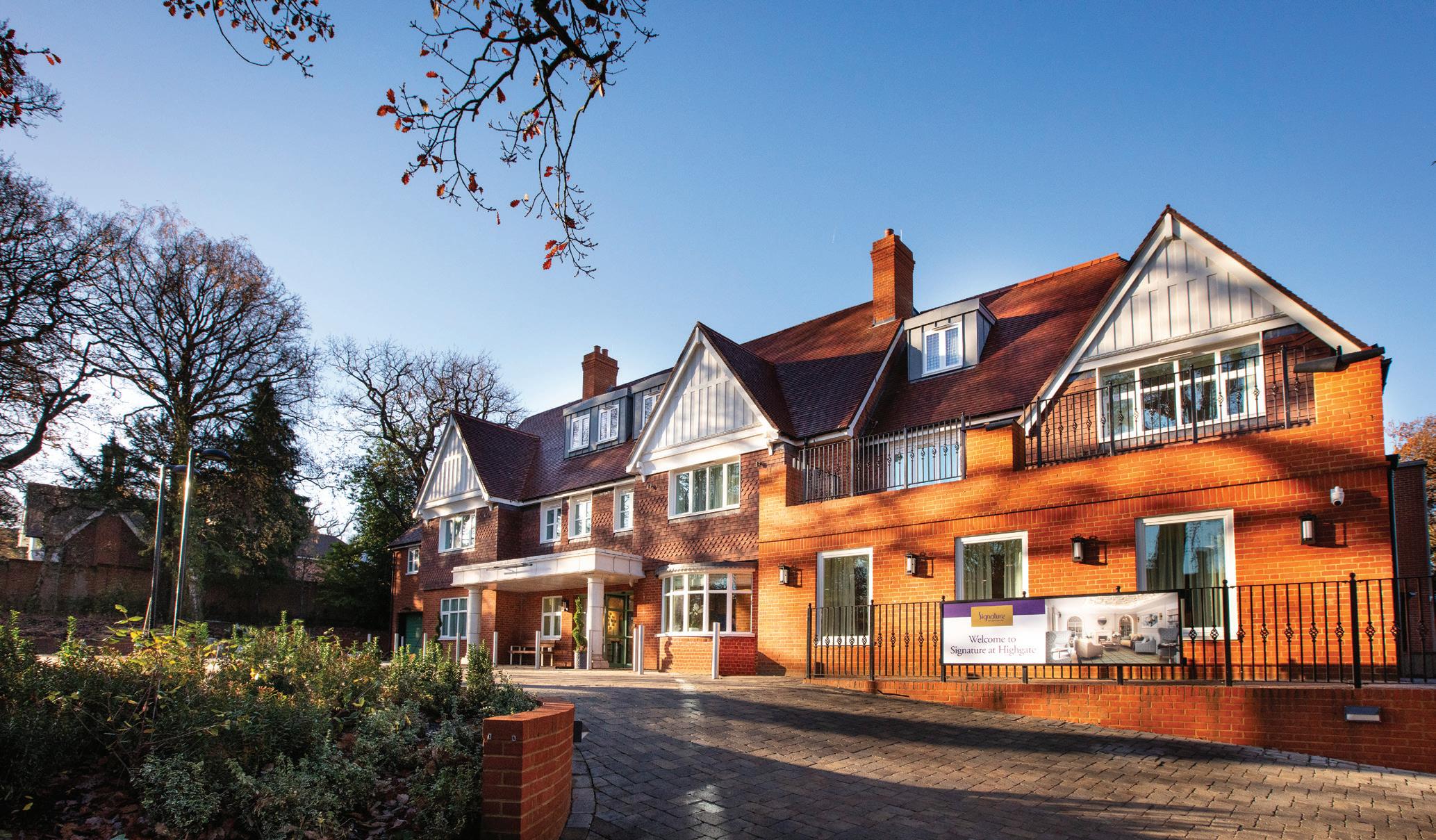
What
initiated
the decision to work with Cambridge Telecom?
In 2007, we had grown to a size whereby we needed someone to manage our fleet of mobile phones. Previously, our account had been managed directly by the Network but we wanted an impartial and proactive advisor to manage the day-to-day requirements and keep control of our expenditure. After looking into a new provider, we decided that Jon Anderton and Cambridge Telecom would be a great fit to provide that support, and after all these years, it’s a partnership that still works fantastically.
Tell us about the initial sign up, how easy was it to implement the work of the company into the home?
It was a very easy transition. What really helped was that the Cambridge Telecom team took the time to fully understand our business and its specific requirements. Knowing how we operated, with our care specifically designed around the individual, helped them to understand what they could do to make our life easier. There is a constant dialogue between Signature’s residents and their families to ensure the care being delivered supports the
individual wellbeing of all residents and Cambridge Telecom allows this to be seamless.
What are the main benefits you have experienced since working
Over the last 17 years, our technical requirements have naturally increased and Cambridge Telecom have become a trusted advisor, supplying mobile and fixed services alongside high-quality data connectivity. Their diligence and expertise allows our internal teams to work on other projects and, coupled with their proactive
CambridgewithTelecom?
BUSINESS
carehomemagazine.co.uk 24
Signature at Highgate
account management, they have made a great contribution to our operations and our budgets – hugely helping to improve our reputation as a care provider.
Can you share any feedback you have received from the residents and their families regarding the ease of communication?
Nowadays, having always-on communications, whether via landlines, mobile phones or over the internet is viewed as a necessity rather than a luxury within a care home. Our residents, and their families, expect to have 24/7 communications. Equally as important, is that our nursing team and our support systems require always-on connectivity. Through working with Cambridge Telecom, connectivity is never a problem, meaning staff and families alike are satisfied and confident in our operations.
As well as serving a purpose for you and the home, have you found that Cambridge Telecom have been helpful in offering advice surrounding topics you’re unsure on? Tell us about this.
Internally, we have a very knowledgeable technology team

but knowing what we’d like to do is different to knowing how to incorporate things in practice. As an example, we are constantly building new care homes and knowing that we require, for example, a data connection to be installed by March is different to getting it done. Cambridge Telecom now support our contractors to make sure that they, and Openreach, are speaking the same language and that potential problems are foreseen and avoided, making it achievable to meet realistic deadlines.
For more information on the home or the communications provider please visit www.signature-care-homes.co.uk www.cambridgetelecom.com



BUSINESS carehomemagazine.co.uk 25
Signature at Highgate
Dishing Up
With World Baking Day on the horizon, the team at Bidfood share a delicious recipe for a sticky orange marmalade cake.
At Bidfood, our passion for great tasting food is something we share with all our customers. As one of the UK’s leading foodservice providers, we strive to go above and beyond for our customers. For us, it’s not just about delivering boxes, it’s about adding value to our customers’ businesses so they can grow.
That’s why we have a host of experts from Chef Development, Technology, Nutrition and more, all on hand to share the latest industry knowledge, nutritional advice and guidance on food standards and legislation. Caring about our customers is the reason why we strive to deliver service excellence, and because of that, we’ve taken a forward-thinking approach to care home catering.
With years of experience between them, our dedicated care team provide operators with support on hydration, dementia, diabetes and IDDSI meals, as well as keeping up to date with the latest food and drink trends. Our chef team have even developed an encyclopaedia of over 500 recipes, providing plenty of inspiration to ensure all residents experience joyful meal times.
It’s World Baking Day on the 19th May and what could be better than a slice (or two) of something soft, moist and delicious? From cakes, biscuits, and loaves, a baked good can work across multiple meal times and the warm, comforting aromas wafting around your care home can create a sense of nostalgia and stimulate resident’s appetites.
Remember to adapt whatever you’re baking for your resident’s

various dietary needs such as gluten, dairy or sugarfree. Providing alternatives for ingredients will ensure that you accommodate every resident.
World Baking Day also poses as a perfect opportunity to get your residents involved with some exciting baking activities. Involve them in every part of the baking process, from measuring ingredients to mixing and decorating! This promotes a sense of accomplishment and encourages social interaction among residents. Make sure you create a relaxing atmosphere; you want to make it an enjoyable experience, so why not play some soothing music and decorate the baking area with colourful decorations, this will also spark up some conversation between your residents.
Our sticky orange marmalade cake is the definition of warmth and comfort. A light yet rich dessert, it oozes with citrusy sweetness, infused with the vibrant flavours of orange marmalade. Each bite offers a delightful burst of tangy,
Ingredients
• 200g baking margarine
• 200g caster sugar
• 4 large eggs
• 200g orange marmalade
• 60ml whole milk
• 8g gluten free baking powder
• 275g self-raising flour
• 300g dried sultanas
• 100g whole glacier cherries
Method
1. Preheat your over to 180 degrees.
2. Grease and line a baking tray with greaseproof paper.
3. Cream the caster sugar and softened butter until it’s fluffy and light.
4. Add eggs, milk and 125g of the orange marmalade to the cream mixture.
5. Sift through the flour and baking powder. Mix just enough to create a silky batter. We don’t want to overdo it, gentle touch us key.
6. Now, add the sultanas and cherries to the mix. Gently, mic them at low speed with a spatula, ensuring they’re evenly distributed.
7. Pour the mixture into the prepped tray. Spread the batter evenly and let it settle for a while.
8. Place the baking tray into the over, setting a timer for 40-45 minutes. When the cake has risen, turned a delicious golden colour and not sticky in the middle, take it out.
9. Once out the oven, allow the cake to relax in the tin for about 10 minutes. Warm the remaining marmalade and brush on top of the cake before allowing it to cool.
zesty goodness and can be made as individual cake portions or a charming loaf cake.
For more baking inspiration and how to plan your menus throughout the week, check out our Menu Cycles guide here: https://view.bidfood.co.uk/ bidfood-menu-cycle-carehomes/?page=1
FOOD AND NUTRITION
carehomemagazine.co.uk 26
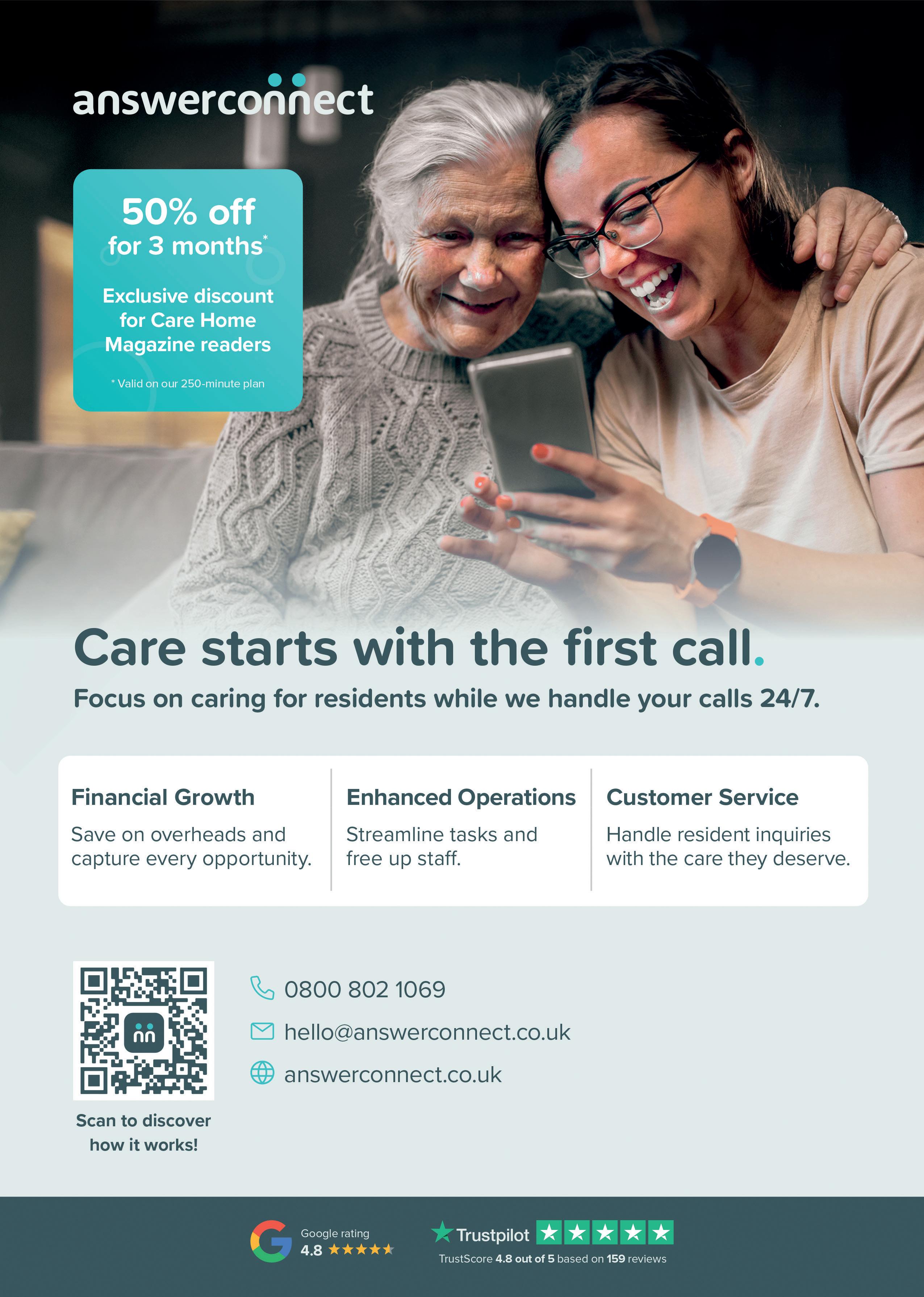
A Perfect Fit
Cafitesse: The perfect coffee solution for care homes, and we explain why.
Coffee plays an essential role in the daily lives of many individuals, including residents of care homes. Where comfort, routine, and quality of life are paramount, the choice of coffee provision becomes crucial. The Cafitesse Excellence Touch machine is an energy efficient liquid roast machine, great for fresh coffee on demand. Cafitesse emerges as the perfect fit for care homes, offering a combination of efficiency, consistency, variation, hygiene, and cost-effectiveness.
Caregivers are often multitasking, attending to various needs of residents simultaneously, due to the time sensitive nature of care home operations. With Cafitesse, the process of coffee preparation becomes streamlined, allowing staff members to serve residents and visitors quickly and effortlessly without sacrificing quality. Furthermore, care homes can see large volumes of both patients and visitors, all requiring a coffee at the same time. By eliminating the complexities associated with traditional brewing methods, Cafitesse enables caregivers to focus more effectively on resident care.
Consistency is another significant advantage offered by Cafitesse in care homes. Residents develop preferences and routines that contribute to their sense of comfort and well-being. With
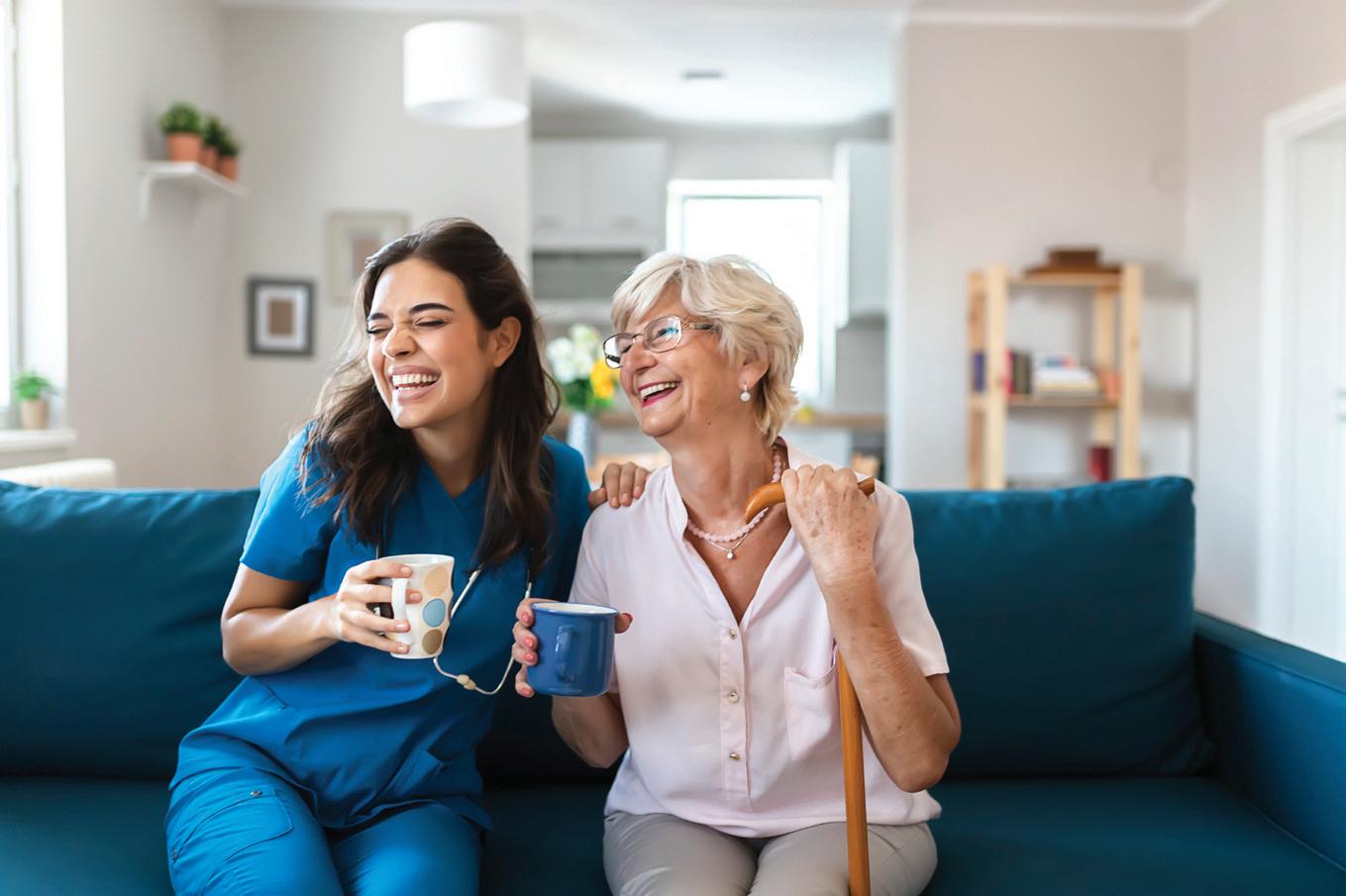
Cafitesse, caregivers can ensure that each cup of coffee served maintains the same high standard, delivering the familiar taste and aroma that residents have come to expect. This consistency helps to enhance the overall experience of residents and contributes to their satisfaction with the care home environment.

Hygiene is a top priority in care homes, where residents may be more susceptible to infections and illnesses. Cafitesse addresses this concern by providing a hygienic coffee solution that minimizes the risk of contamination. The design of Cafitesse machines facilitates easy cleaning and maintenance, ensuring that each cup
of coffee is prepared in a safe and sanitary manner. By upholding strict hygiene standards, Cafitesse helps to safeguard the health and wellbeing of residents and staff alike. Furthermore, Cafitesse offers cost-effectiveness, a crucial consideration for care homes operating within budgetary constraints. While there may be an initial investment in acquiring Cafitesse machines, the long-term benefits far outweigh the costs. Reduced waste, efficient resource utilization, and lower maintenance requirements contribute to significant cost savings over time, by optimizing the coffee provision process.
Cafitesse enhances the overall experience of residents and facilitates the smooth operation of care home facilities and stands out as the perfect coffee solution for this environment, as all crucial needs including hygiene, consistency, ease of use, and speed of service are met.
Contact the team for a free trial at – UK-Sales@JDECoffee.com
LIFESTYLE
carehomemagazine.co.uk 28
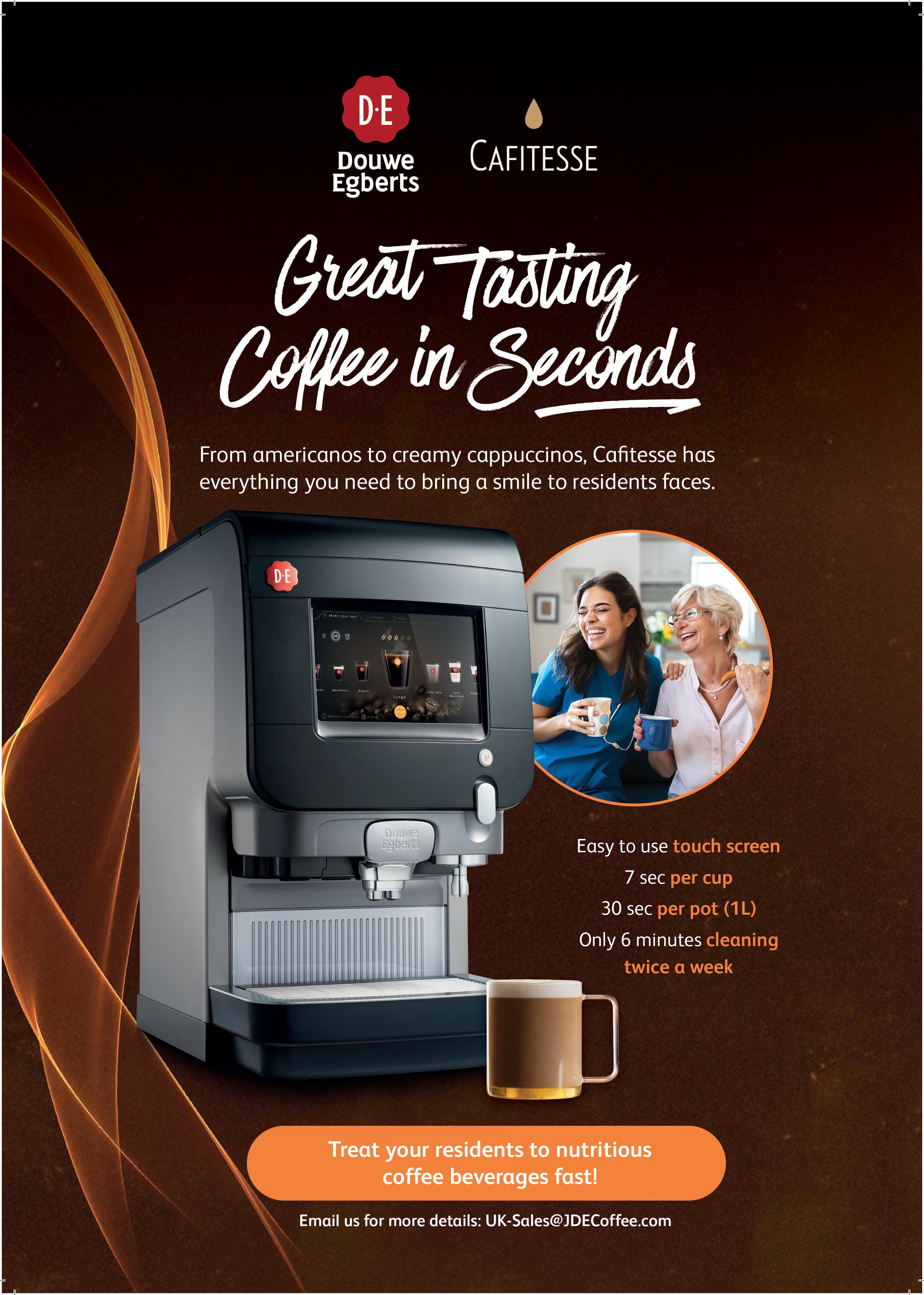




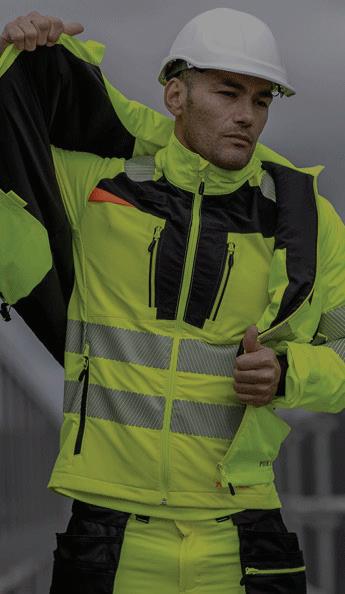
Order 24/7 on your client portal Hospitality Healthcare General Workwear PPE 01283 548 234 / 07710 702 524 katy.john@onbrand-workwear.co.uk www.onbrand-workwear.co.uk Our team at Onbrand have over 100 years combined experience working for or supplying the workwear industry with a deep understanding of the specific challenges and needs of those working in the healthcare sector.
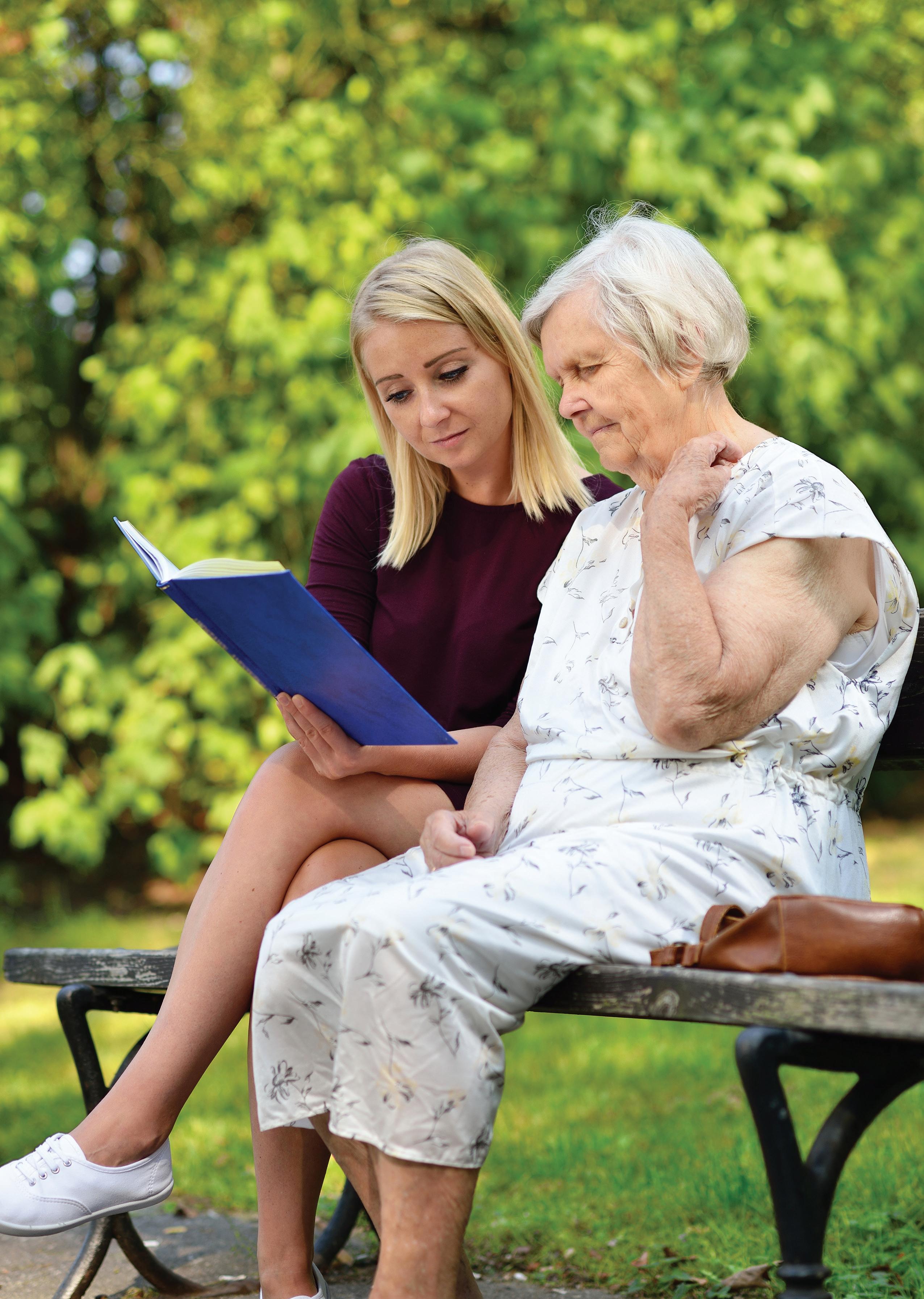
Outdoor Spaces
carehomemagazine.co.uk 31

Essential 5
Creating an outdoor space at a care home involves thoughtful consideration to cater to the needs and wellbeing of residents. Here are five essential elements that such a space shouldn’t be without.
Accessible Paths and Seating Areas
In care home gardens, ensuring accessible paths and seating areas is paramount to fostering inclusivity and enhancing residents’ wellbeing. These paths should be thoughtfully designed, free of obstacles and sufficiently wide to accommodate wheelchairs and mobility aids. Incorporating ramps and handrails where necessary ensures ease of movement for individuals with limited mobility. Equally important are well-placed seating areas throughout the garden, providing opportunities for residents to rest, socialise and enjoy the therapeutic benefits of nature. These seating areas should offer sturdy, comfortable seating options with back support and shade for protection from the elements. By prioritising accessibility in garden design, care homes can create welcoming outdoor spaces that promote independence, social interaction and overall quality of life for their residents.
Safety Features
Safety features in a care home garden are paramount for ensuring the security of residents, particularly those with limited mobility or cognitive impairments. Installing handrails along pathways and steps provides stability for those who require support while navigating the garden. Additionally, adequate lighting along pathways and in common areas allows residents to safely enjoy the garden during the evening hours, and reduces the risk of accidents. Incorporating non-slip surfaces in outdoor seating areas minimises the risk of slips, especially during wet or icy conditions. Fences or barriers around potentially hazardous areas such as ponds or steep slopes are essential to prevent accidents. Finally, regular inspections and maintenance of safety features ensure that they remain effective in promoting a secure and enjoyable outdoor environment for residents of the care home.
Natural Elements and Greenery
The presence of natural elements, such as flowing water features or rock formations, creates sensory stimulation and opportunities for contemplation. Moreover, these gardens provide a nurturing environment for wildlife, inviting birds and butterflies to flourish, enriching the sensory experience for residents. Access to nature has been shown to improve mood, reduce stress and promote overall well-being among seniors.
Shaded Areas and Sun Protection
Many elderly individuals are more susceptible to heat-related illnesses and sunburn, due to aging skin, decreased mobility and underlying health conditions. Providing ample shaded areas, such as pergolas, umbrellas or natural tree canopies, can work to protect residents from excessive sun exposure. Consider the use of UV-resistant materials for outdoor furniture, and encourage residents to wear hats and sunscreen when spending time outdoors.
5 4 3 2 1
Engaging Activities and Amenities
Design the outdoor space to accommodate a variety of activities and interests. This may include gardening areas, bird feeders, outdoor games like shuffleboard or bocce ball, sensory gardens or designated areas for relaxation and meditation. Look to reinvent the garden’s look throughout the year by incorporating seasonal plantings and decorations. For example, plant bulbs for spring blooms, decorate with pumpkins and gourds in the fall or hang lights and ornaments during the holiday season. Tailoring activities to the preferences and abilities of residents can also promote social interaction and stimulation.
OUTDOOR SPACES
carehomemagazine.co.uk 32


Thermography is a non-invasive method that captures thermal images of the body. By analysing these images, trained users can detect subtle temperature variations, which may indicate underlying health conditions not yet visible to the naked eye. PERSONALISED CARE WITH
Learn more at thermidas.fi MM00028A (1) Jiang et al., 2022. Application of an infrared thermography‐based model to detect pressure injuries: a prospective cohort study, British Journal of Dermatology.
THERMAL IMAGING
Embracing Nature
With experts on hand, we explore the impact of community engagement and outdoor events in care homes.

In recent years, there has been a growing recognition of the importance of outdoor spaces in enhancing the quality of life for individuals residing in care homes. These outdoor areas, once overlooked, are now being reimagined as vibrant hubs of community engagement and interaction. As we delve into the significance of outdoor events within care home settings, it becomes evident that these spaces are not merely extensions of indoor facilities but integral components of holistic care.
Community engagement
To really make a splash with at-home outdoor events, look to introduce innovative or specialised outdoor furniture solutions.
initiatives and outdoor events play a pivotal role in fostering a sense of connection, purpose, and wellbeing among residents. Whether it’s a garden party, a nature walk, or a horticultural therapy session, these activities offer invaluable opportunities for socialisation, physical activity, and sensory stimulation. Moreover, they provide residents with a chance to reconnect with nature, reminisce about past experiences, and create new memories in a supportive and nurturing environment.
This article seeks to explore the multifaceted benefits of community
OUTDOOR SPACES
carehomemagazine.co.uk 34
engagement and outdoor events in care homes, with a particular focus on the role of outdoor spaces. Through expert insights, we aim to shed light on the transformative potential of these initiatives in enhancing the overall wellbeing and quality of life for older adults.
By understanding the significance of outdoor environments and the importance of meaningful engagement within them, we can pave the way for innovative approaches to care that prioritise connection, inclusion, and empowerment. As we embark on this journey of exploration, let us unravel the profound impact of community engagement and outdoor events in nurturing the body, mind, and spirit of those in care home settings.
Randal Southall, Director at Furncare explained, much to your joy, that creating and maintaining a beautiful outdoor environment needn’t be as daunting as it sounds. “In fact, some might argue that your garden doesn’t even need to be beautiful. It just needs to be outside!”
Getting residents to engage with the garden and use outdoor spaces can be difficult. The well documented physical, social and emotional benefits of spending time in the fresh air count for nothing in the minds of many residents.
That’s why furniture plays such a vital role in encouraging your residents to venture outside. Randal explained that residents who snack, dine or drink outside spend up to 80% longer in the fresh air – and that’s good for them. “That simply won’t be possible if you don’t have the right garden furniture for them to use. Comfortable companion, lounge and dining sets are key, but they must be well constructed, and the upholstery and cushions need to be practical, water and stain resistant and fire retardant of course. Ideal outdoor furniture from Furncare includes the comfortable Alder 3 Piece Lounge Set and Austin 4 seater Dining Set,” Randal explained.
Similarly, we all know exercise is
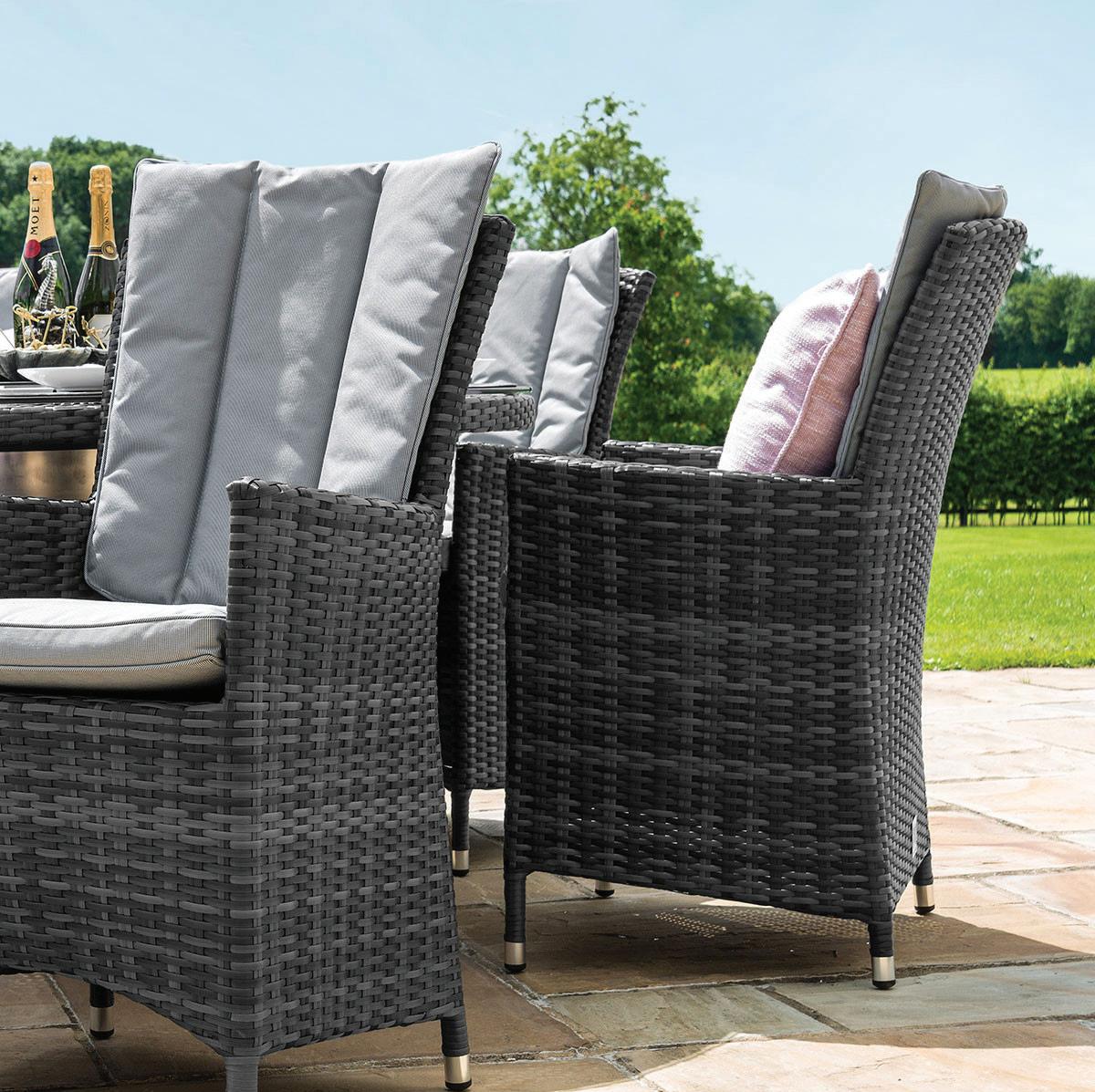
good to build or retain mobility, so encouraging gentle strolls around the grounds is important. Be warned though; if there are no obvious places to rest once in the garden, no amount of persuading will get a resident outside. Randal said, “Benches, companion and lounge sets will change all that. Creating attractive resting places within a few minutes stroll of each other will make the world of difference. New for 2024 from Furncare is the Linden Companion Set, Linden Garden Bench and 2, 4 and 6 seater Avon Dining Sets – all ideal to rest and take in the sights, sounds and smells of the garden.”
To really make a splash with at-home outdoor events, look to introduce innovative or specialised outdoor furniture solutions specifically designed for use in care home environments. The popular Furncare Orla Circular 6 Seater Picnic Table is cleverly designed to provide easy access and legroom for up to six people, making it perfect for outdoor events. It has special large gaps built in between the seats to allow wheelchair users to join the party too. The Orla Table
is incredibly stable and robust, and is made from Northern European Redwood which is FSC Certified sustainable wood, and is treated with a unique spirit immersion treatment. “A great way to include wheelchair users seamlessly into your outdoor gatherings and events,” added Randal.
Outdoor furniture contributes to creating a welcoming and homely atmosphere in care home outdoor spaces. In their prime, many residents will have tended their own gardens and cut their own grass, raised a family, gone to work and dealt with a myriad of domestic chores too. There would have been precious little time left to relax in the garden. Now settled in their care home, residents have earned their time in the sunlight. Randal explained how a sturdy companion or lounge set will enable them to play cards with friends or family, read magazines, write letters, knit, natter and generally enjoy the freedom of the outdoors.
“Companion and dining sets also provide a welcome place for outdoor socialising, afternoon tea and communal dining – all
OUTDOOR SPACES carehomemagazine.co.uk 35
Furncare - Avon
invaluable for the residents whilst relieving some of the pressure on the carers. Even sitting there, taking in the birdsong, breathing in the smells of nature and watching the wildlife, is a welcome distraction and takes some beating,” said Randal. Ideal outdoor furniture from Furncare includes the comfortable Alder 3 Piece Lounge Set and Austin 4 seater Dining Set. New for 2024 from Furncare is the Linden Companion Set, Linden Garden Bench and 2, 4 and 6 seater Avon Dining Sets.
Getting residents to venture outside can be a significant challenge, even when the sun is out. They may actually want to, but are discouraged by the fact that all the comforting facilities indoors will be left behind. Residents should be able to see appropriate resting places from the care home doorway - a Furncare Linden bench or companion set for example. This will give them the confidence to take on the ‘first leg’ of a stroll around the grounds. Subsequent resting places should always be visible to help navigate a route and encourage venturing further out into the garden.
Care homes often host events or activities that involve interactions between residents and visitors, such as family members, volunteers, or local community groups.
Outdoor furniture provides a welcoming environment for these

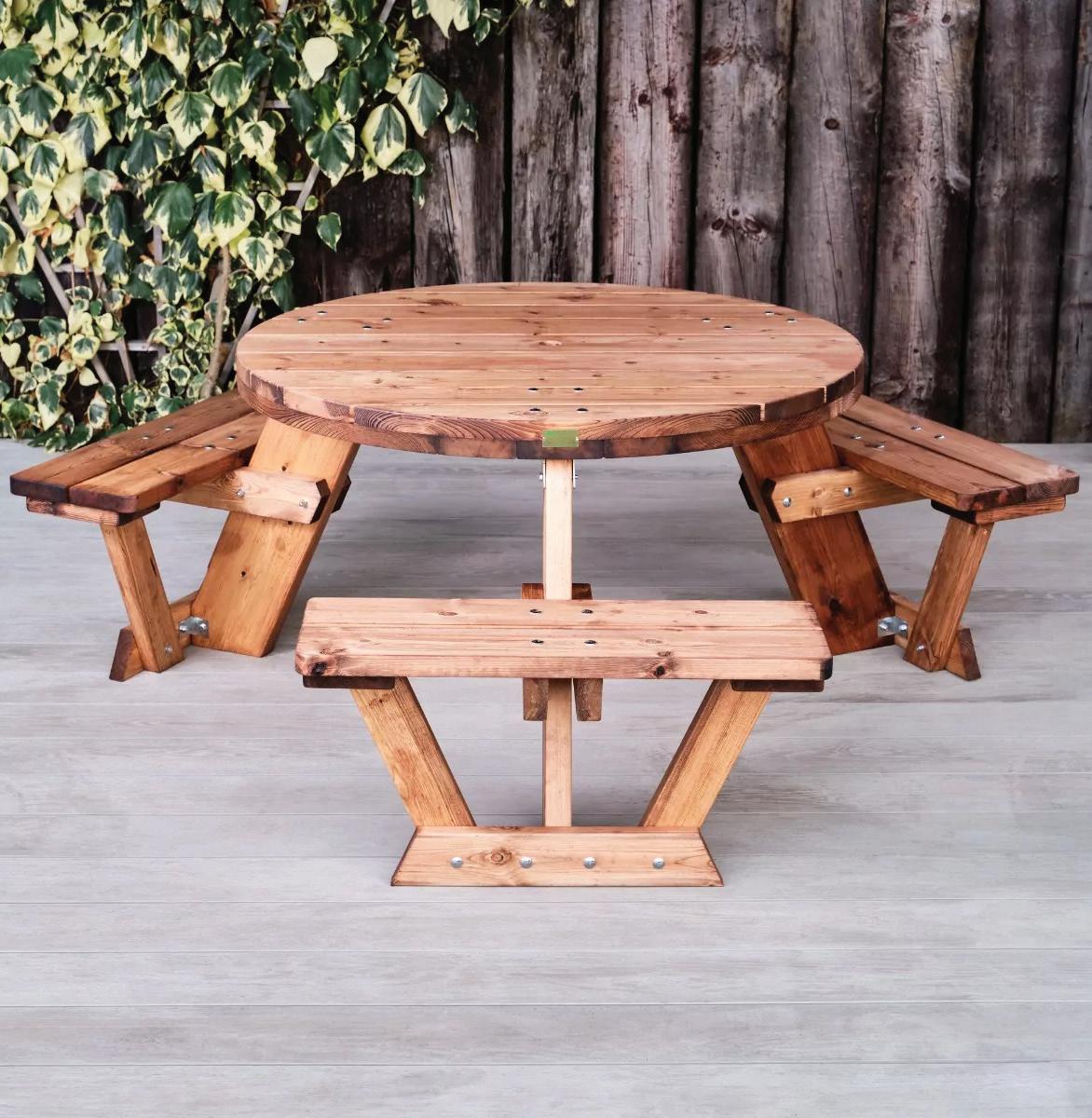
interactions, allowing residents to socialise with people from different generations and backgrounds.
When the weather is fine, there are very few regular social activities that can’t be moved to the outdoors and undertaken just as successfully as indoors. Most are more enjoyable and beneficial ‘al fresco’. Whether it’s an organised seated exercise session or a spontaneous knit and natter with friends, all it takes is appropriate seating. Board games, cards, even crafting can all be easily facilitated with the right garden furniture.
Tea, snacks and meals can all be managed easily in the garden with the right dining sets too. Randal explained that the fabrics used in quality outdoor furniture are just as comfortable, and water and stain resistant as their interior counterparts, and must be fire resistant. “The Furncare Alder 3 Piece Lounge Set, Austin 4 seater Dining Set and the new 2, 4 and 6 seater Avon Dining Sets are ideal. And the birds will be grateful for any stray crumbs!” finished Randal.
The integration of community
engagement and outdoor events in care homes has proven to be transformative, enriching the lives of residents in numerous ways. Beyond mere recreation, these initiatives foster a sense of belonging, purpose, and connection to the world outside the care facility. By bridging the gap between residents and their surrounding communities, they promote social inclusion and combat feelings of isolation and loneliness. Furthermore, the benefits extend beyond the individual to encompass the entire care home environment, fostering a culture of positivity, vitality, and holistic wellbeing. As we continue to recognise the importance of memorable experiences and comfort in outdoor spaces, investing in your garden becomes not only a moral imperative but also a practical strategy for enhancing the quality of life for those in care. Through ongoing commitment and collaboration, you can ensure that every individual, regardless of age or ability, has the opportunity to thrive and find joy in their golden years.
OUTDOOR SPACES carehomemagazine.co.uk 36
Furncare - Linden
Furncare - Orla
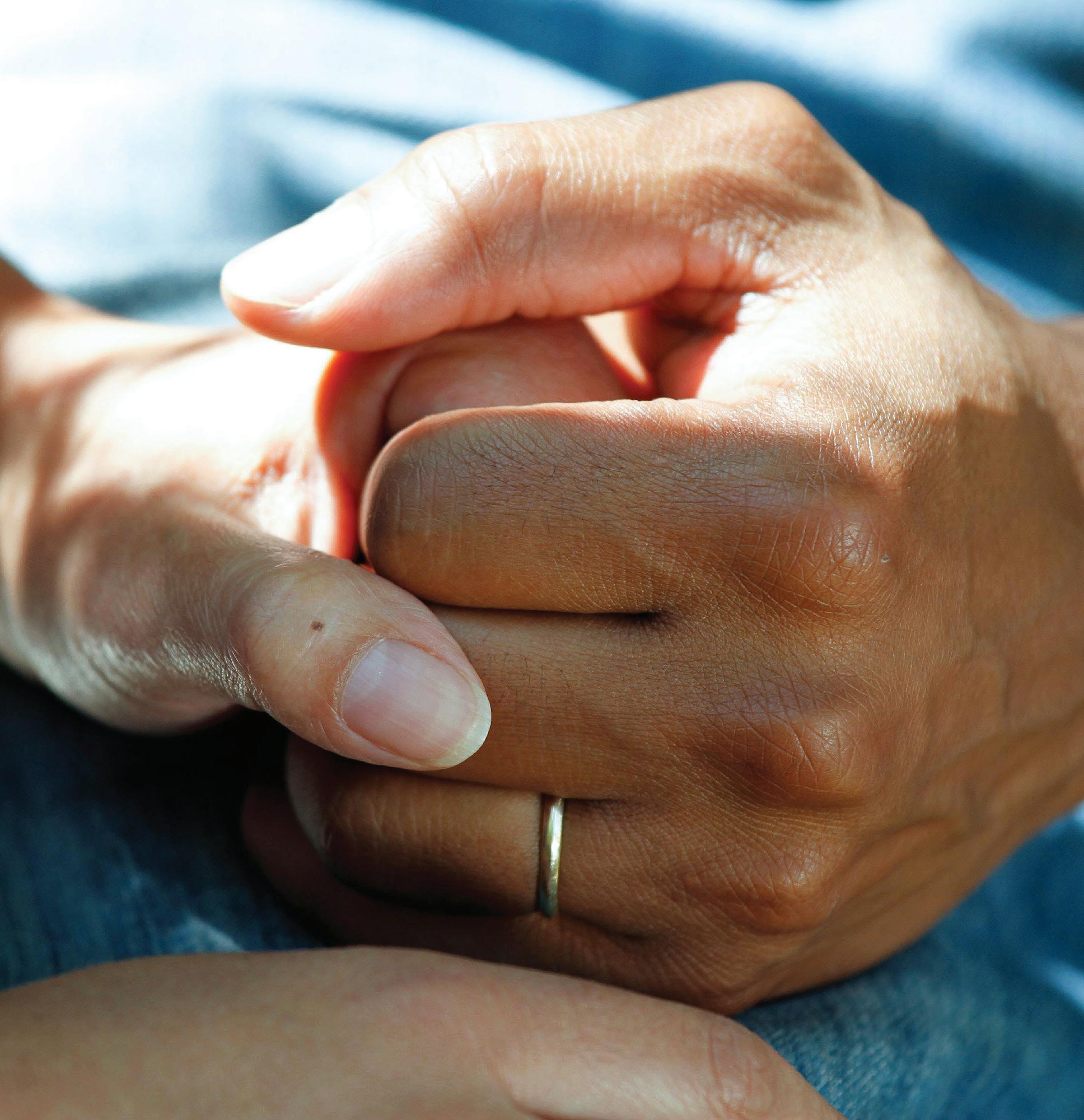
GET IN TOUCH
We’d love to hear from you on how your business is progressing in 2024. Specifically, any new ideas you’ve implemented, any ways you are making additional revenue, your sustainability initiatives and your plans for the rest of the year – we know that a lot of you are doing inspiring things every day in your businesses and we want to give you the opportunity to shout about it.
Please reach out to jamesd@cimltd.co.uk for the opportunity to be featured in Care Home Magazine. www.carehomemagazine.co.uk

Care Home Equipment Accounting
Intracare
benjones@intracare.co https://intracare.co Intracare Ltd

Care Supply Store
01375 651 609
www.caresupplystore.co.uk

@caresupplystore
Care-SupplyStore-708536899310571 care-supply-store
Coffee Solutions

JDE Professional UK
0808 100 1030
www.jacobsdouweegberts professional.co.uk
Food Services

allmanhall
01225 745520
hello@allmanhall.co.uk www.allmanhall.co.uk allmanhall

Signature Dining
T: 07714 710707
E: paul.r@signature-dining.com
T: 07738 981860
E :sarah.h@signature-dining.com www.signature-dining.com
Interior Design
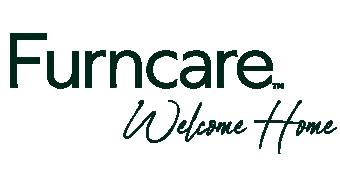
Furncare
01603 664900
sales@furncare.co.uk www.furncare.co.uk

@furncareltd furncare furncare

Laundry


REM 01282 619977
sales@rem.co.uk www.rem.co.uk

@remuklimited remuklimited rem-1
Girbau
01462 427780
sales.uk@girbau.com www.girbau.com Girbau girbau-uk
Miele
0333 230 1347
professional.sales@miele.co.uk www.miele.co.uk/pro/care miele-professional
Remote Health Monitoring
August International
01920 487700
audarhealth@augustint.com www.audarhealth.com/home/ carehome
carehomemagazine.co.uk
Directory 38








































































































































































